Science For Monks 2011
After a week and a half of working with the monks we gave them a final project.
We broke them into 10 groups containing 2 to 5 monks.
Then we asked them to develop and present a science learning box plus a presentation based on this box, a presentation given in the style we had shown them.
They developed their lessons (Groups of 3 or more had to present two lessons.)
Then they presented their lesson to one of the other small groups.
On the last day they presented their lessons to all the other monks.
They also brainstormed the buddhist philosophical connections to the exhibition they are developing on climate change.
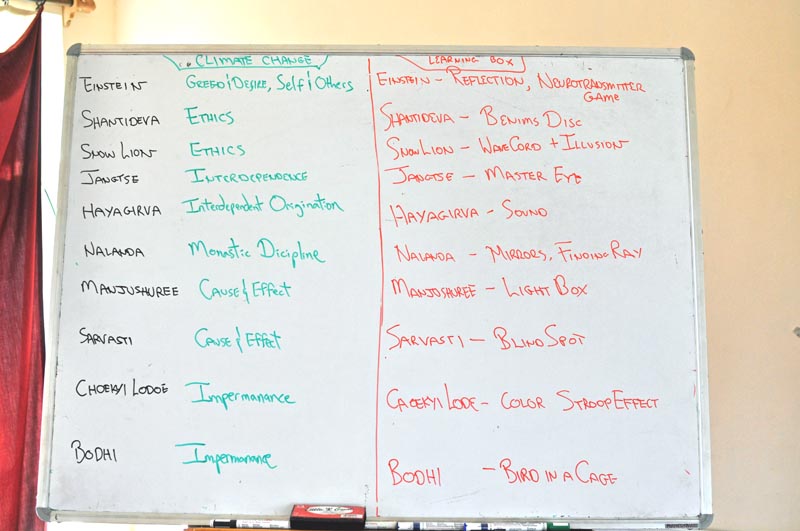
On the left the monks list the buddhist philosophies connected to the show they will produce on Climate Change, on the right they list their Learning Box topics.
Here are images of the monks presentations
Neurons
The first group presented explorations of neurons starting with a demonstration of human reflexes. Then modeling neurotransmitters and neurons and finally presenting information and asking for questions.
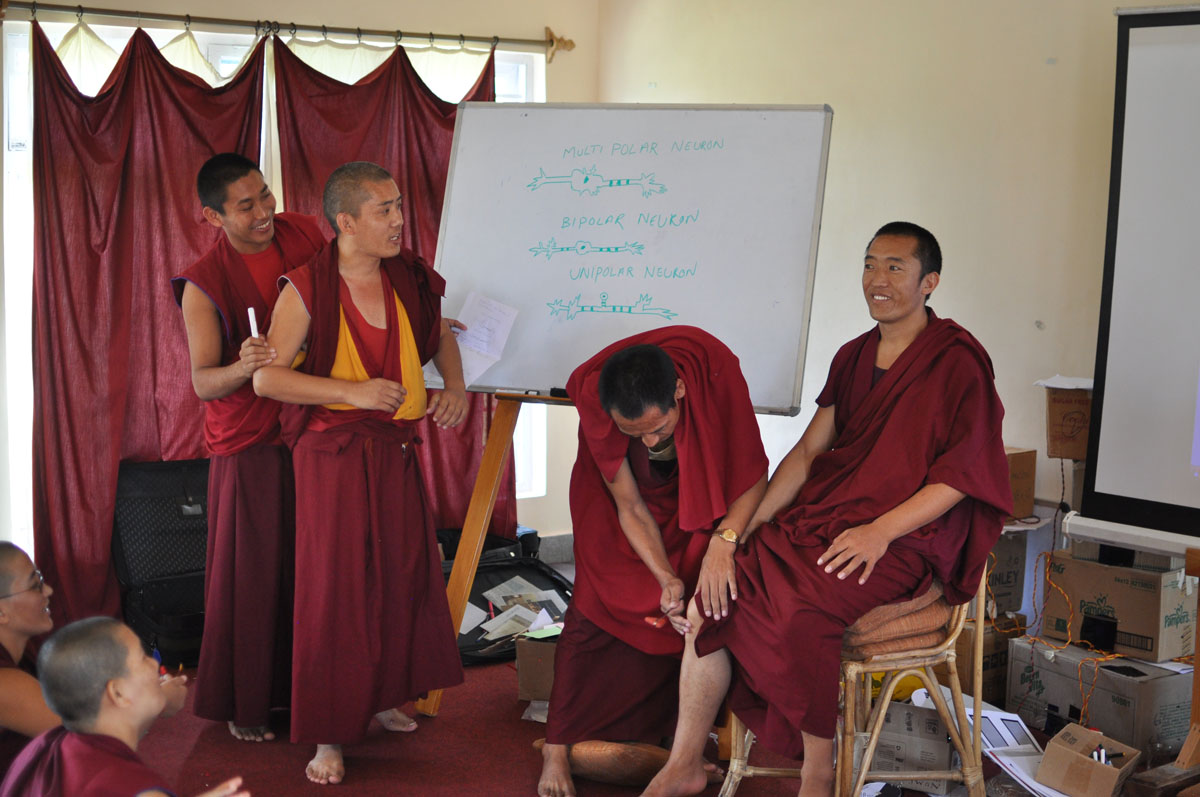
Testing reflexes.
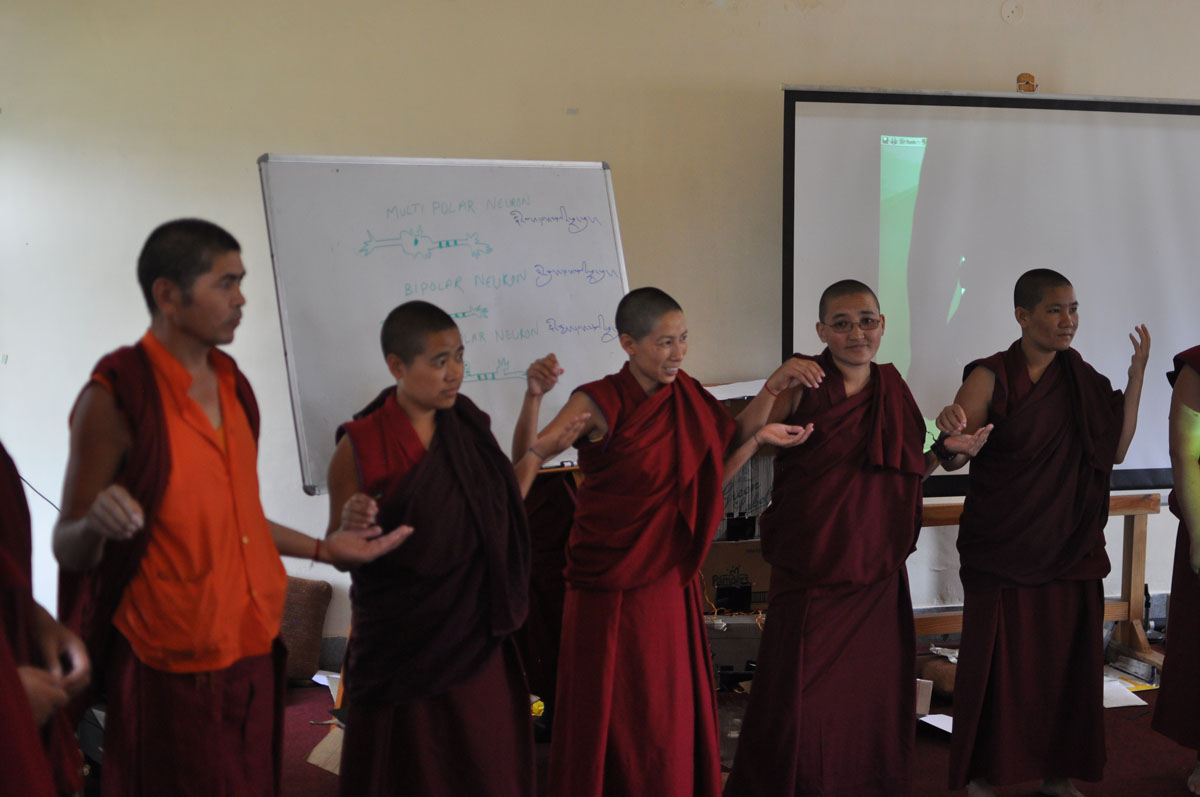
The Neurotransmitter game.
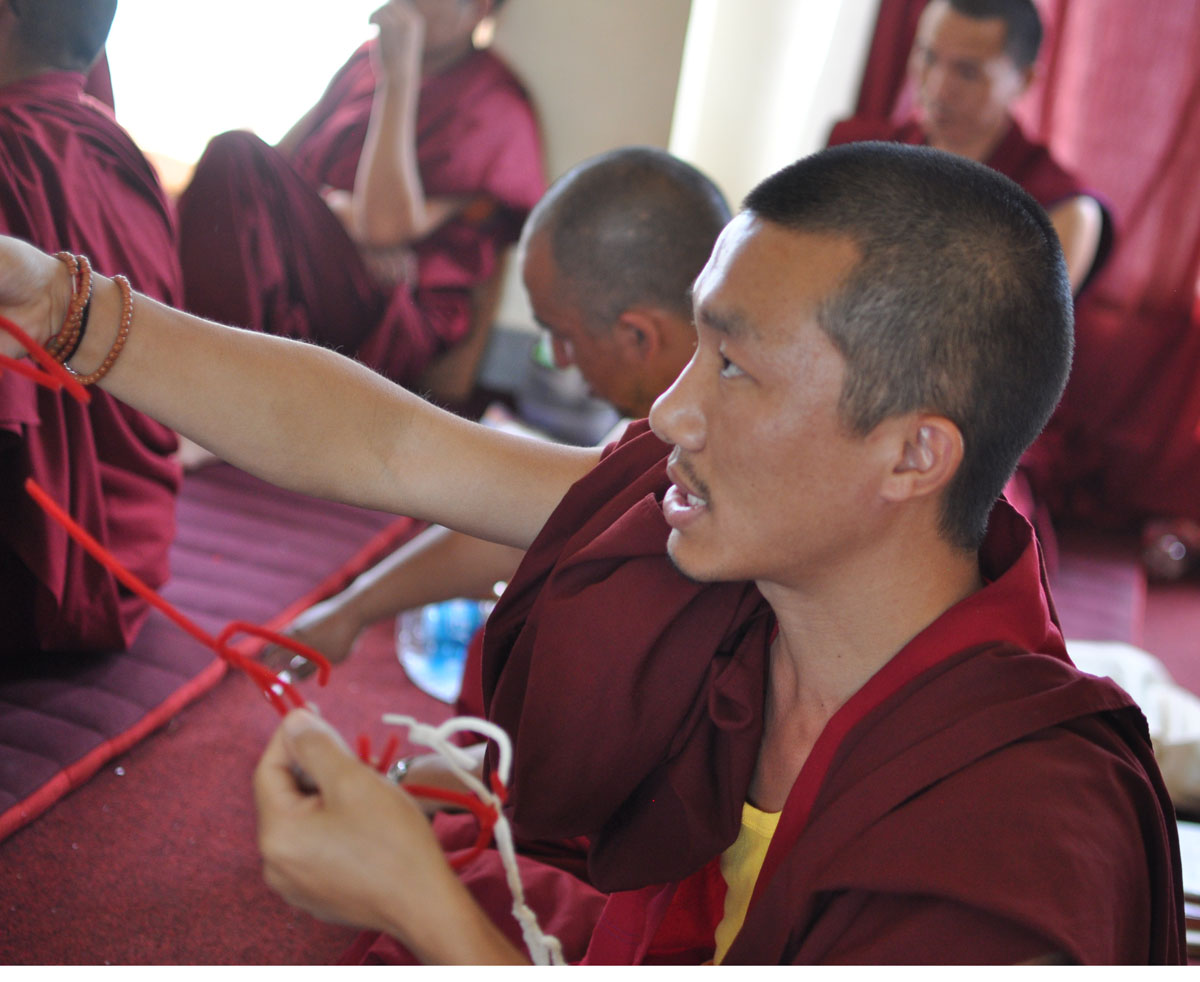
Making pipecleaner neurons
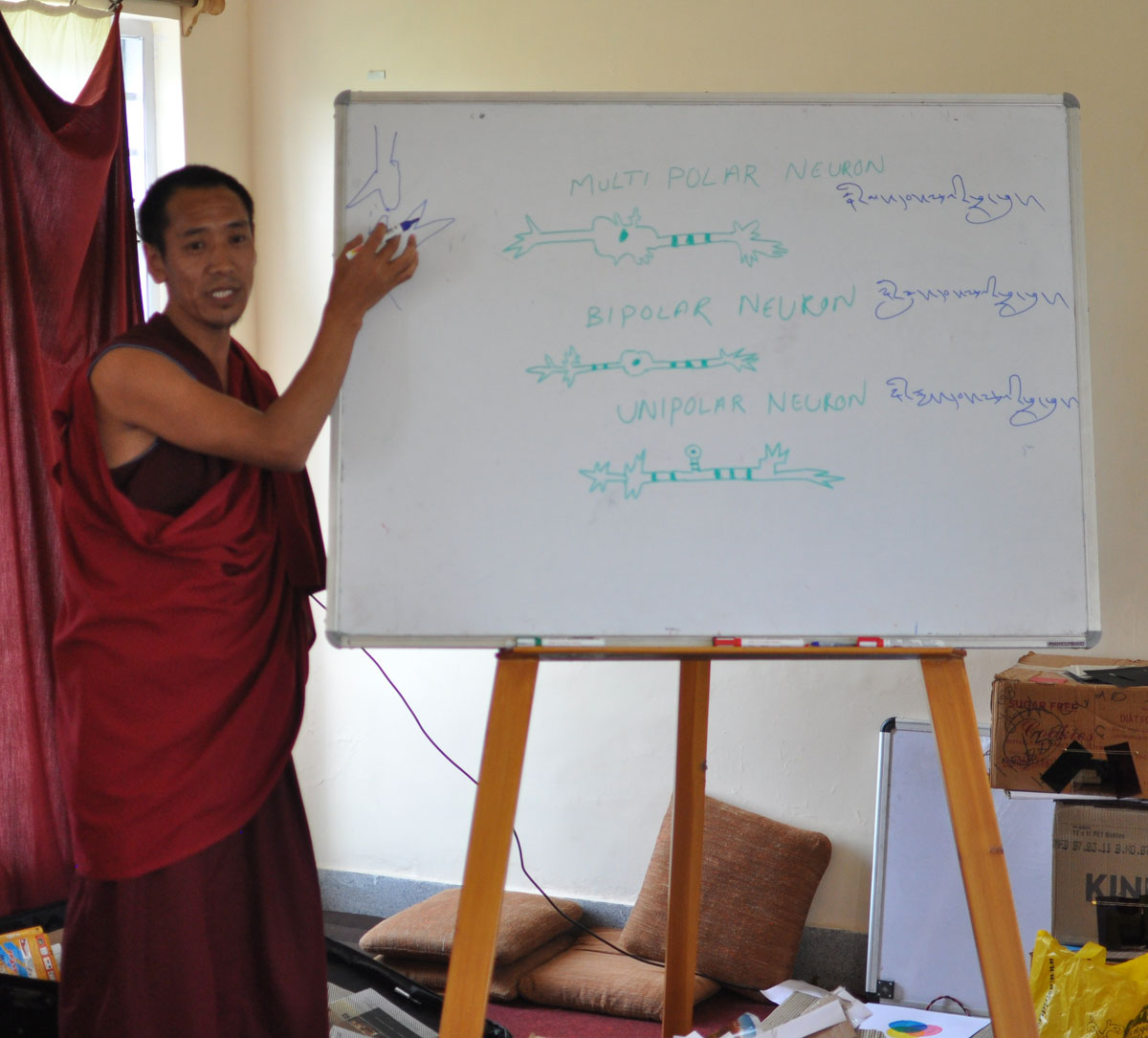
Describing the science of neurons and nerve signals.
The first presentation knocked our socks off, they used the hands-on explorations to lead smoothly into questions and presentations on the science of neurons. Every presentation that followed used this same model.
Benham's disk.
As with all the groups they spent time developing their activities.
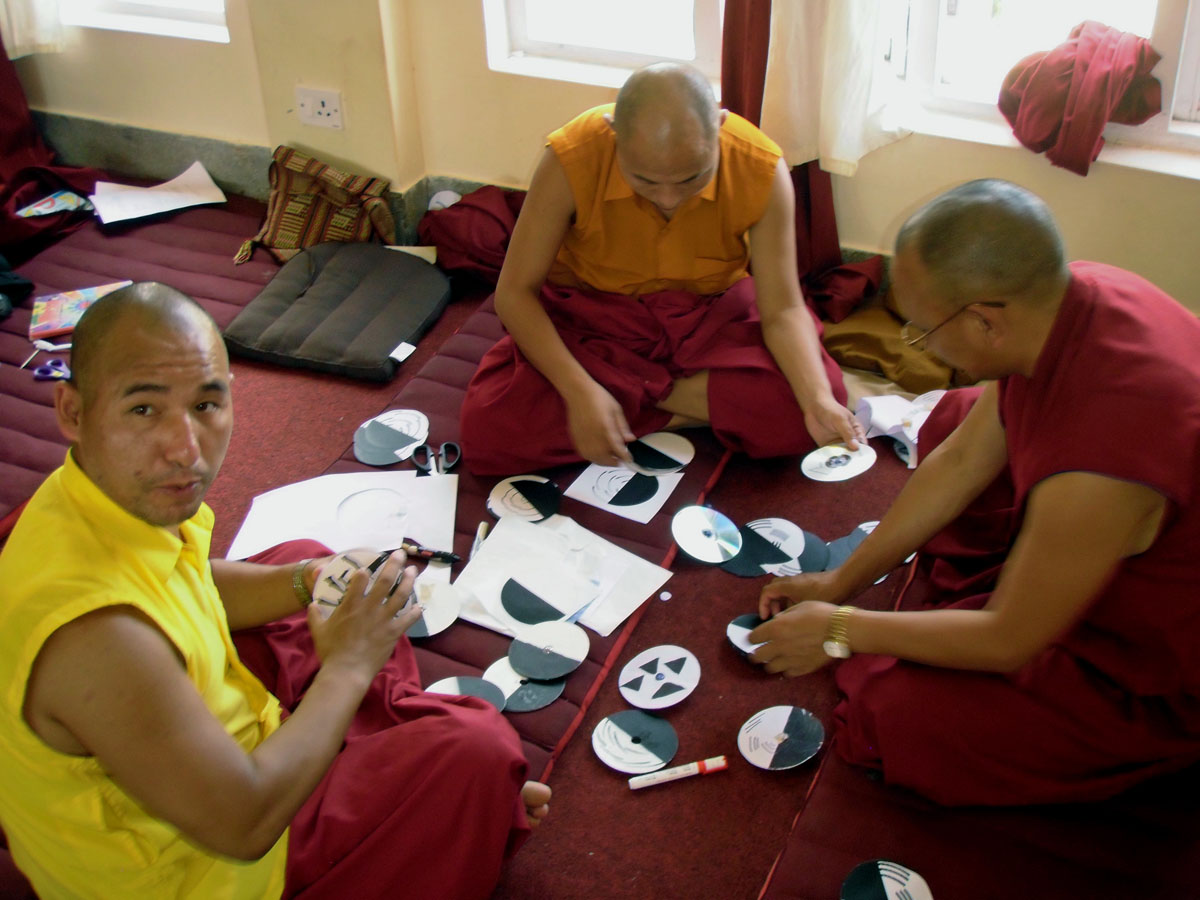
Trial and success yields many new patterns for Benham's disks
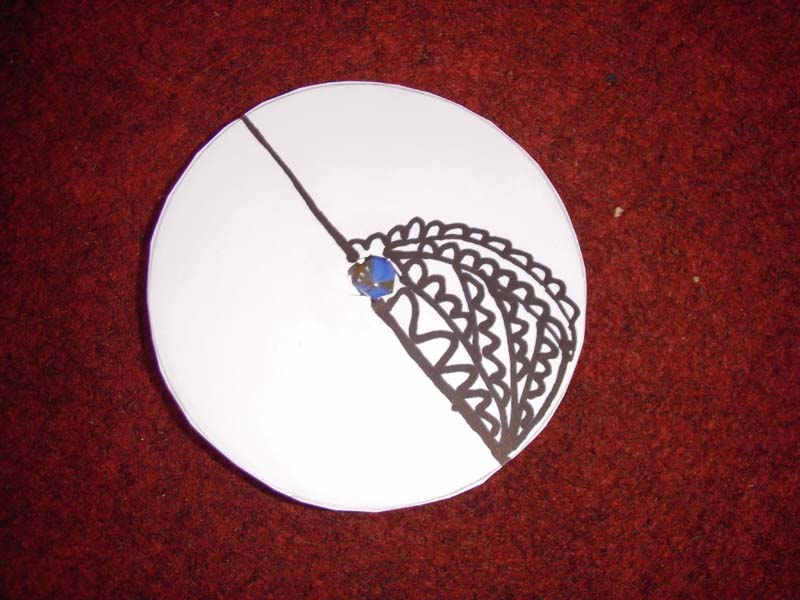
A new Benham's disk.
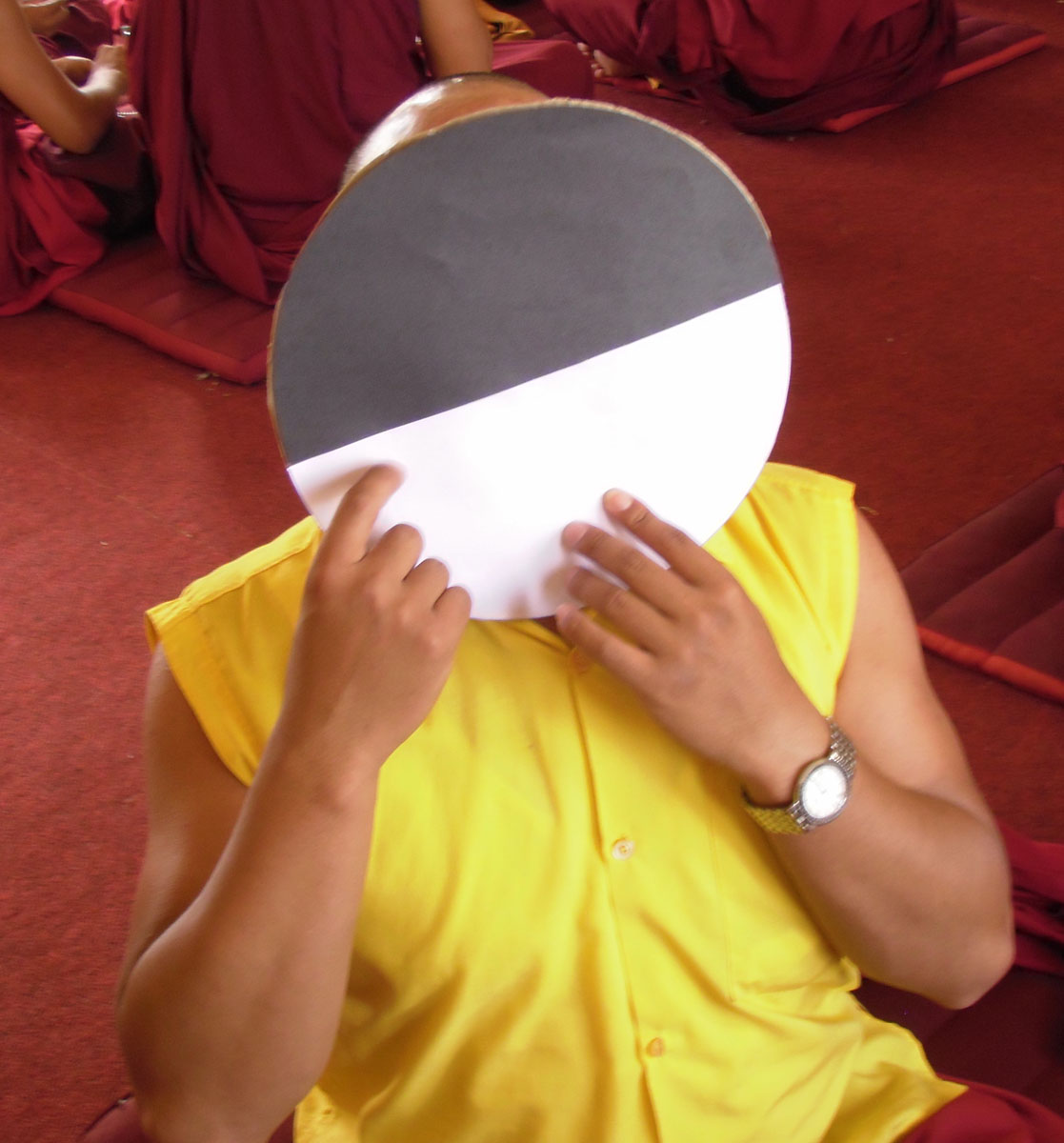
Maybe if we make a big one?
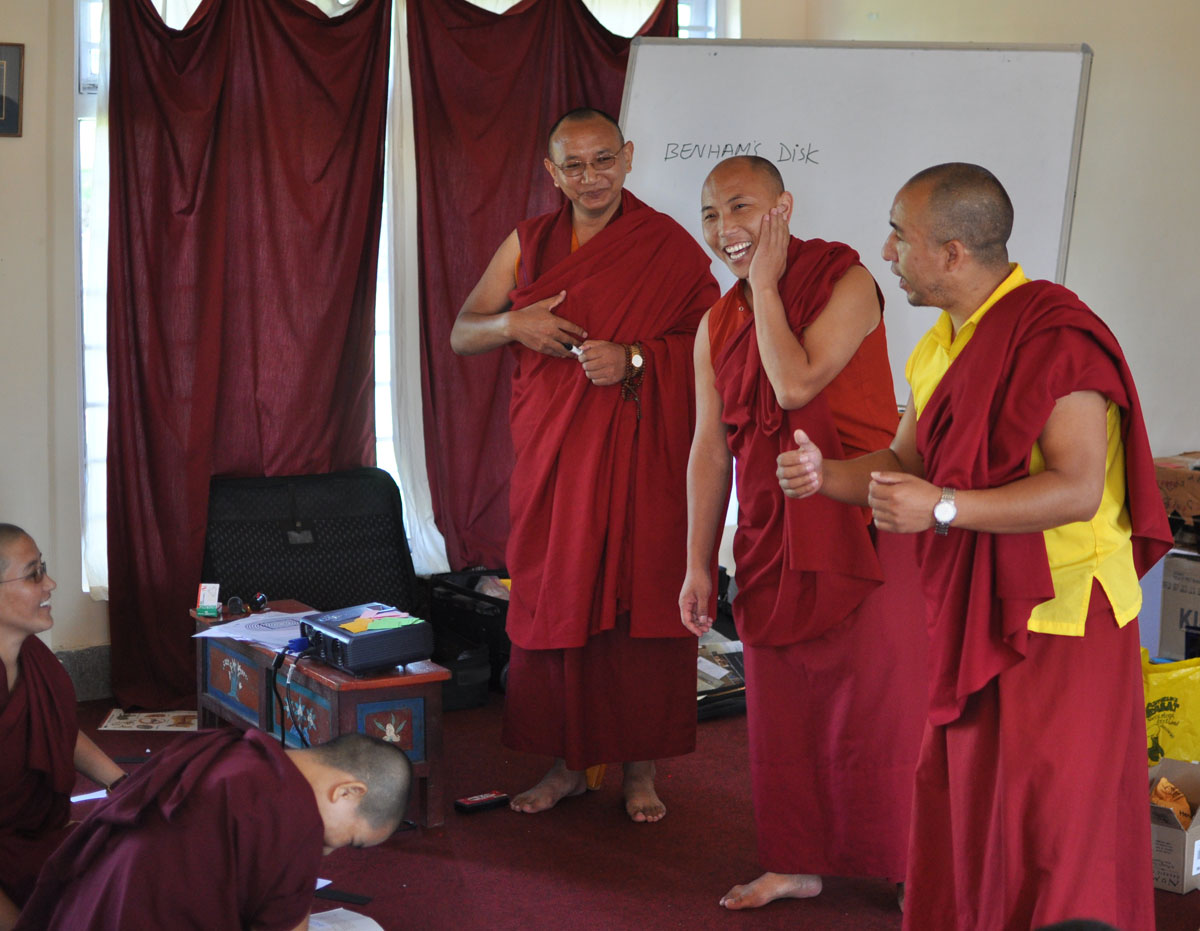
The three monks introduced themselves, "I'm Richard, I'm Modesto, I'm Paul!" and gave great impressions of each of our teaching styles.
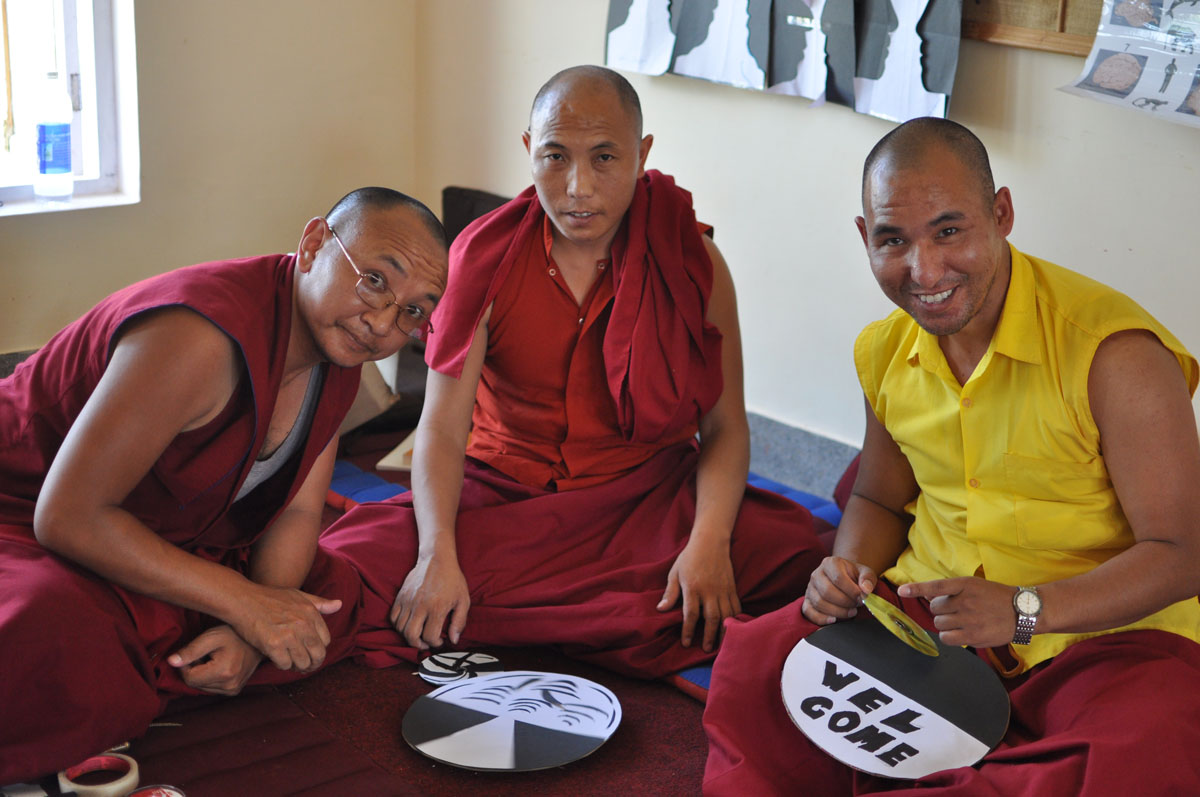
The Monks started their lesson with a spinning Benham's disk that showed colors, when it slowed down it revealed the word welcome. A perfect provocation.
Waves on a cord and Illusions
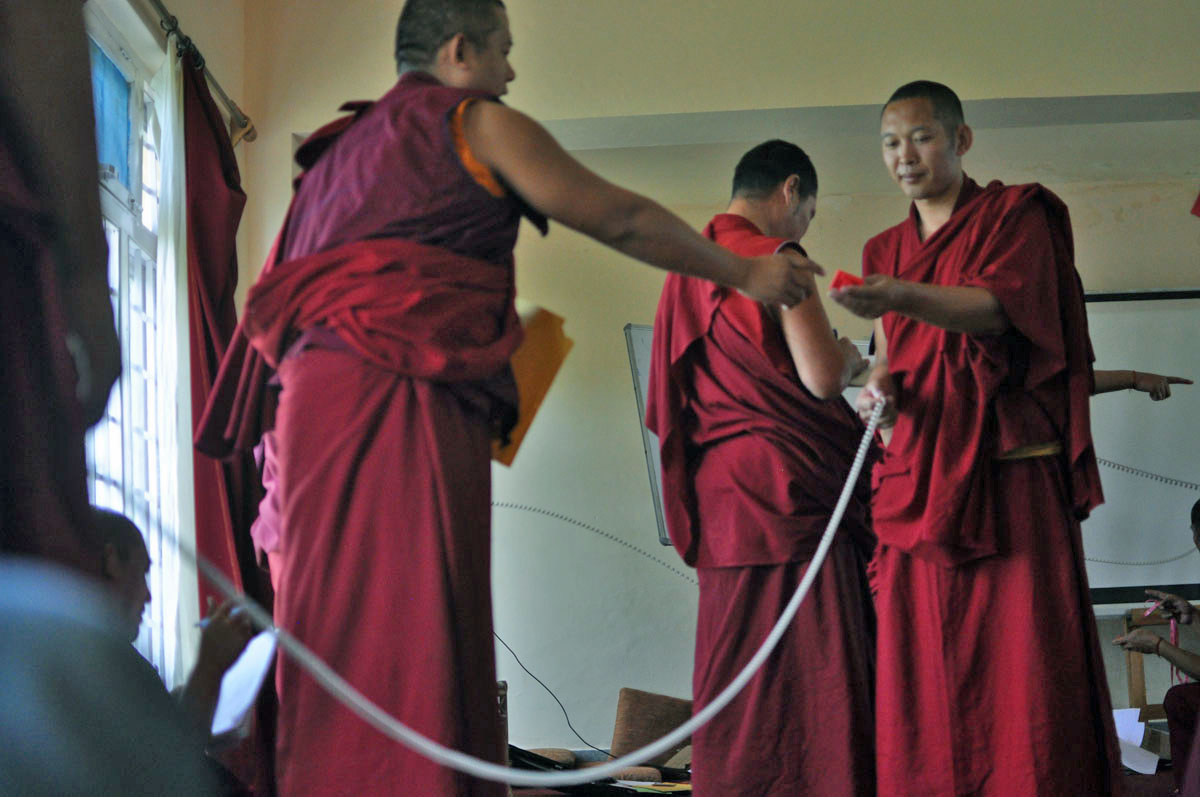
Each group of monks made waves on a phone cord and measured the length of the cord and the travel time of the wave to find the wave speed.
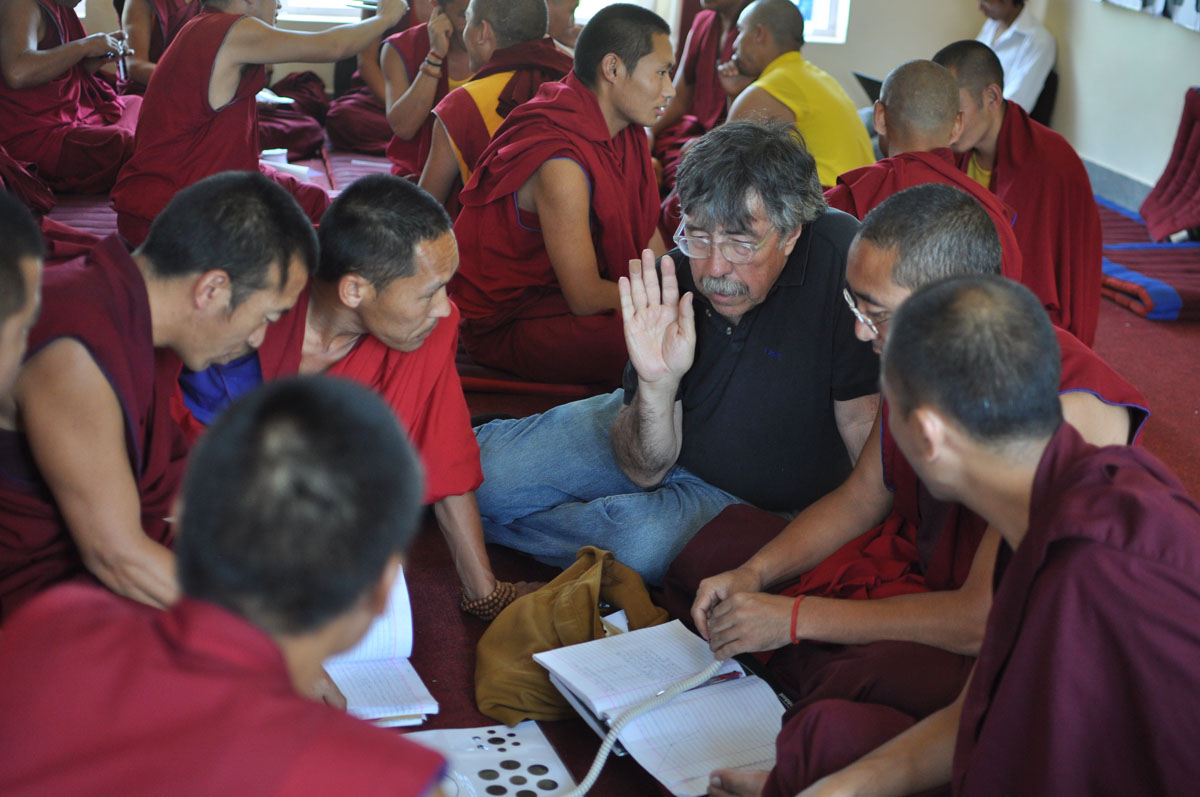
They consulted with Modesto on illusions.
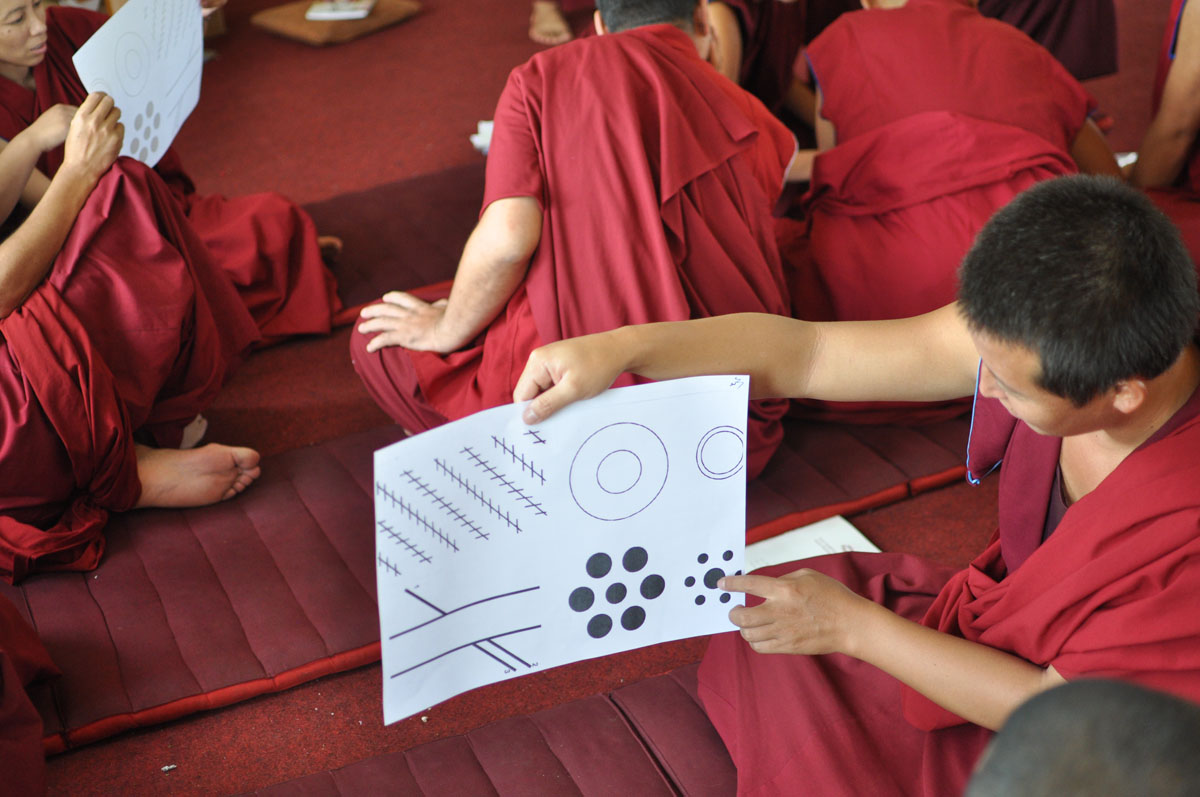
For their second exploration they provided every group with illusions to explore.
I really hoped that I could have shown them Don Rathjen's Neil Illusion collection.
Master Eye
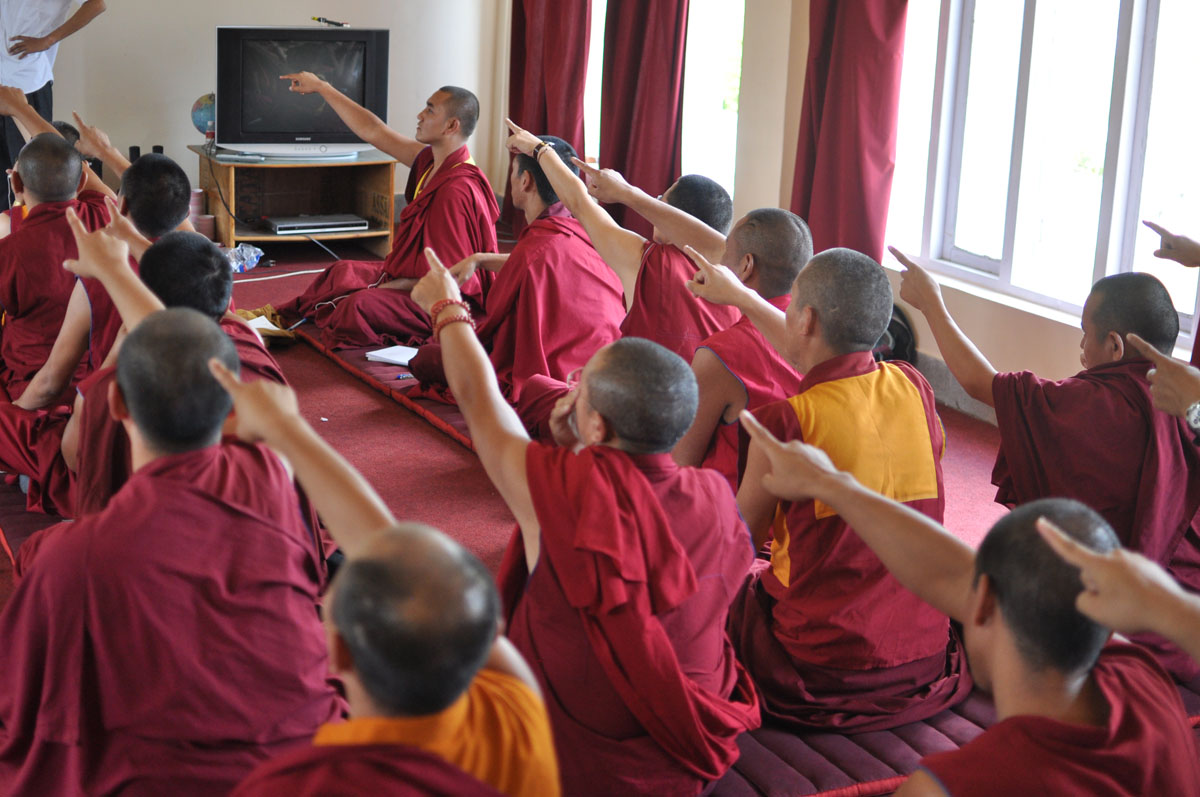
Master Eye the point and wink technique. Point at a distant object. Then wink one eye closed, if the finger seems to jump then the eye you closed was your master eye. Try this at least twice using your right and left hands to point. Then follow it up with another technique.
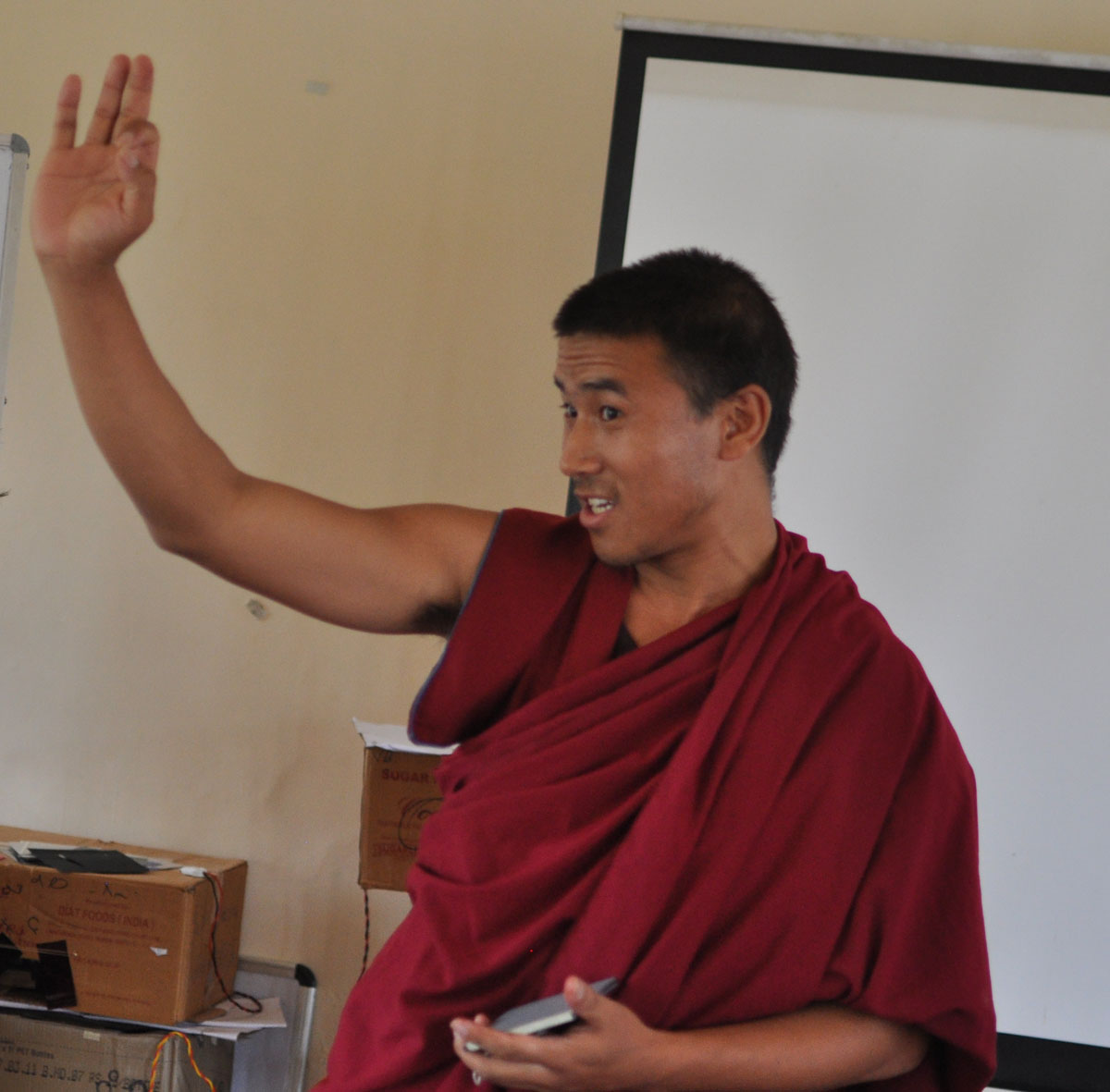
Some people find it is easier to circle the distant object then bring the circle toward their face to find their master eye.
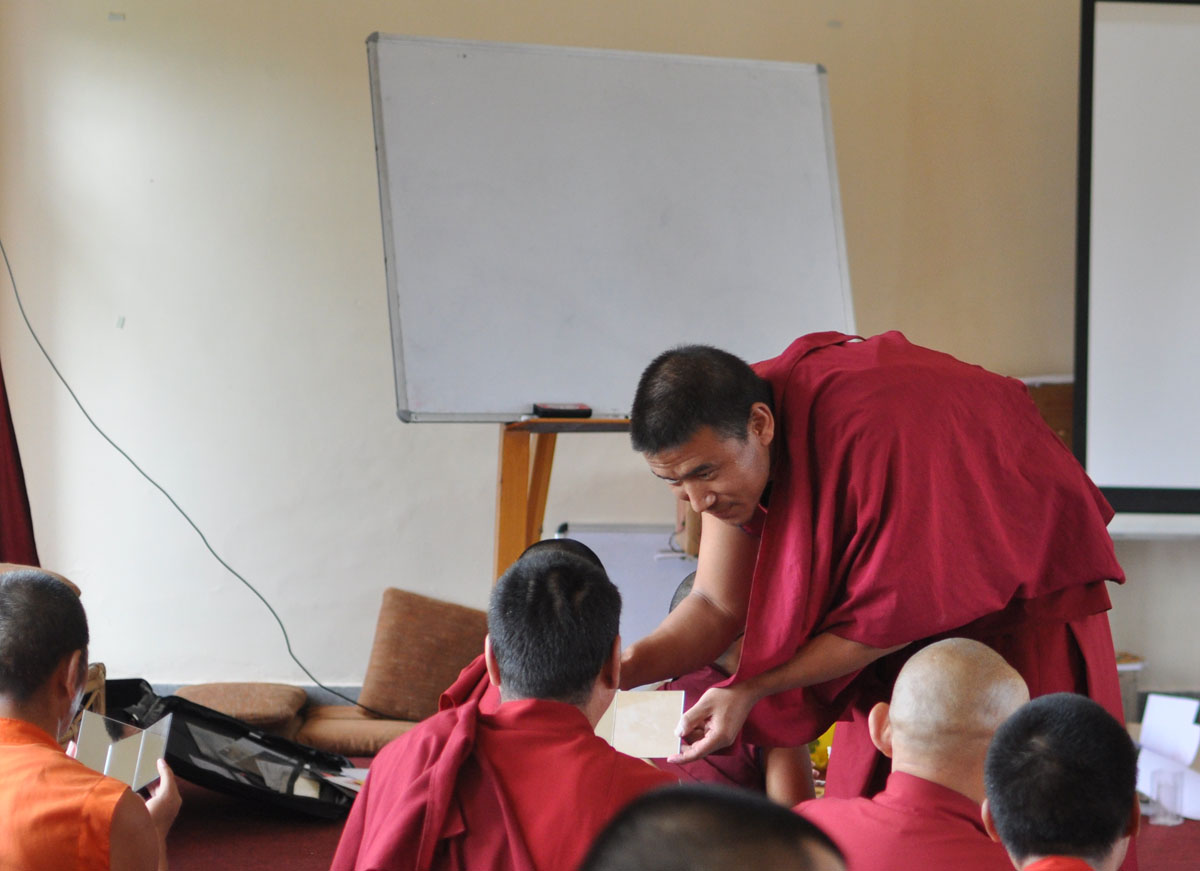
Master Eye using two mirrors at right angles. When you look in the mirror you see the line between the two mirrors on your face. If the line goes through one eye, that is your master eye. Touch your face to find the eye since two right angle mirrors reverses your face from its usual appearance in a mirror. If the line goes trough your nose you have balanced vision, if one line is to one side of your nose then you have a slight master eye. If you see two lines equally strong running through each eye then you have balanced vision. If one line is more prominent than the other you have a slight master eye.
Sound Group
The sound group already has their own website, in Tibetan!
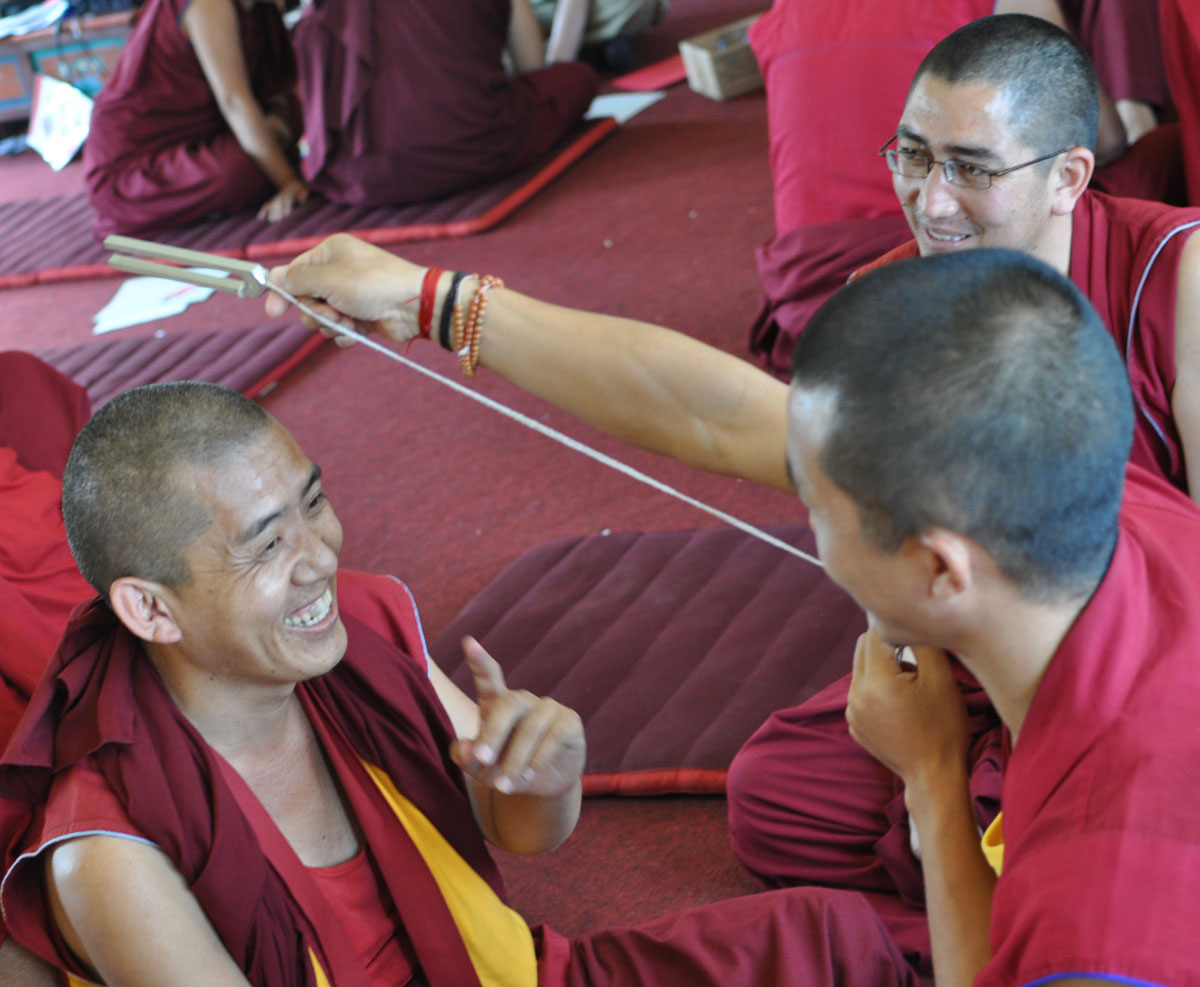
Find that sound. Close your eyes and point to the tuning fork.
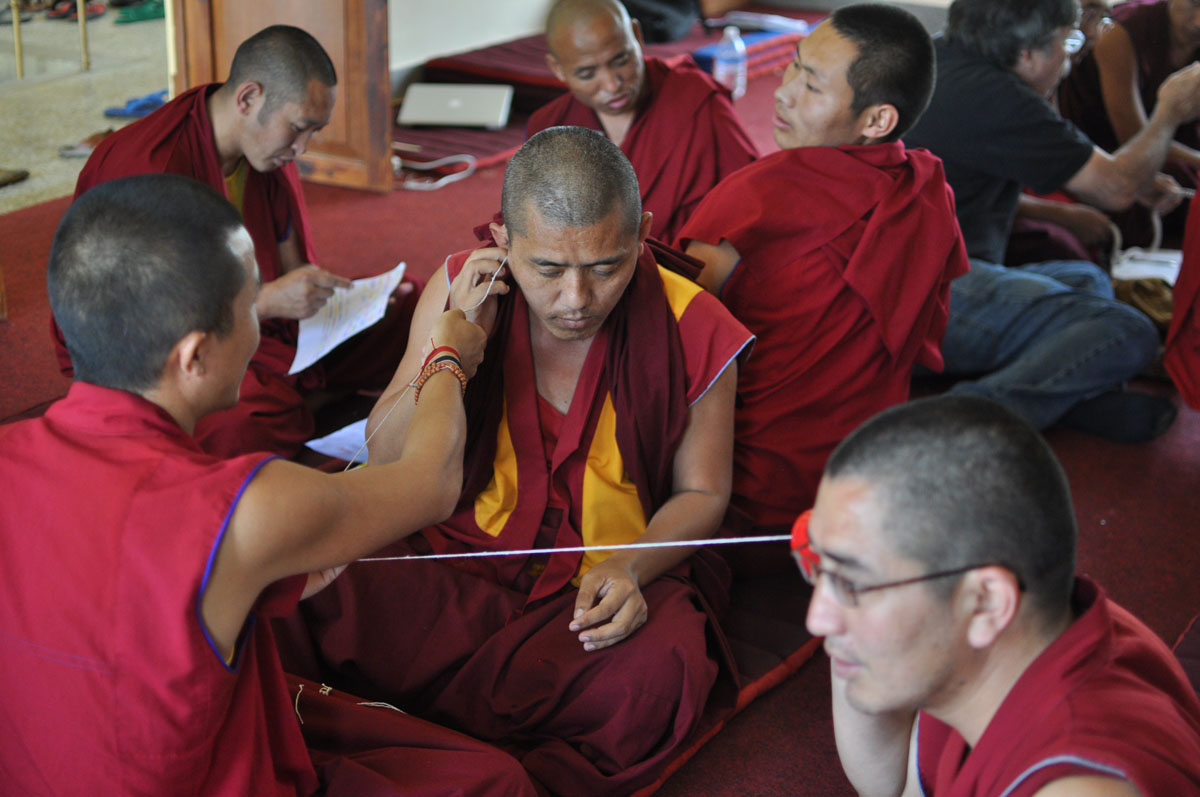
A classic string telephone.
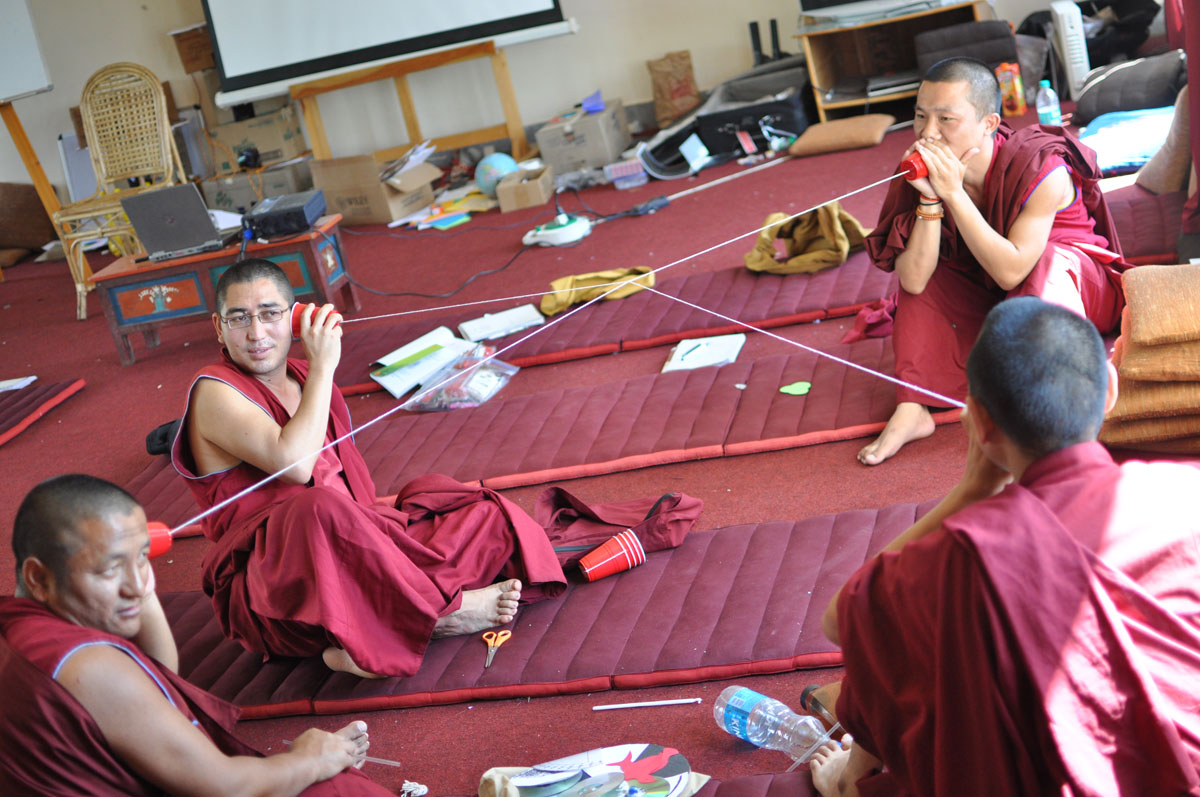
Two string telephones crossing.
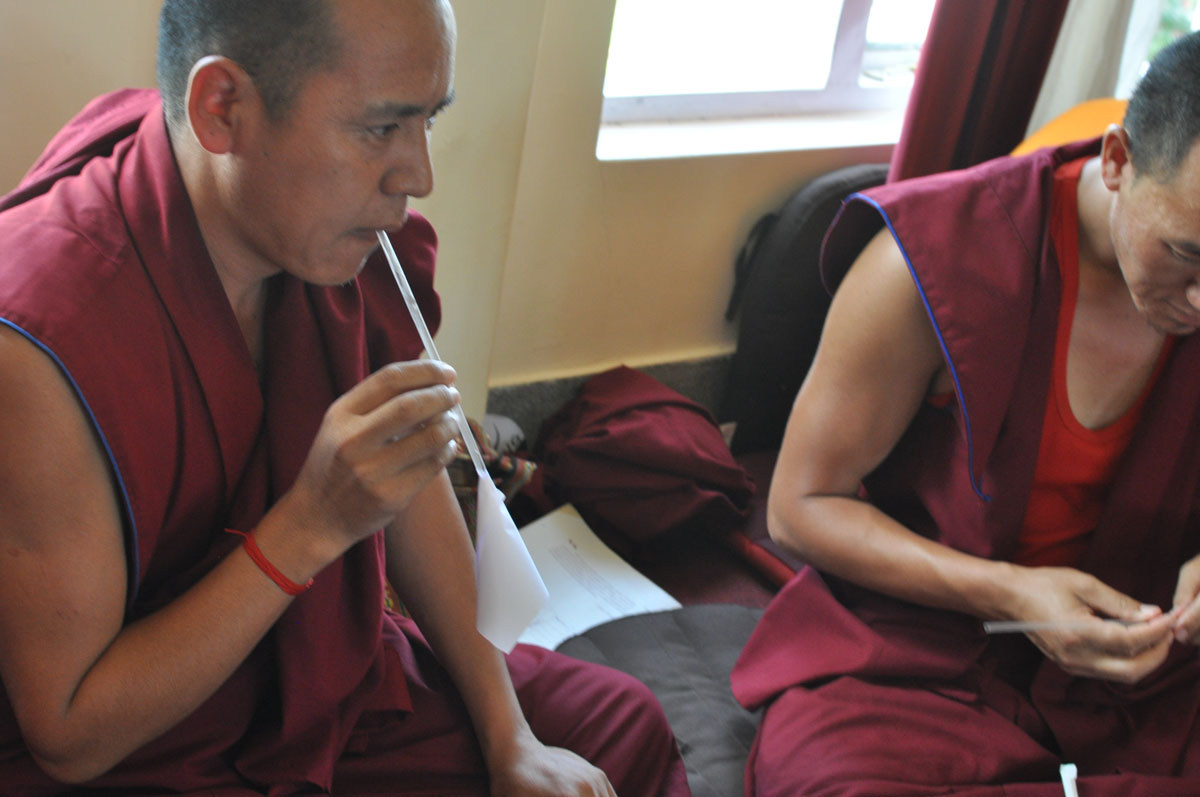
Straw Oboe with bell

Find that sound.
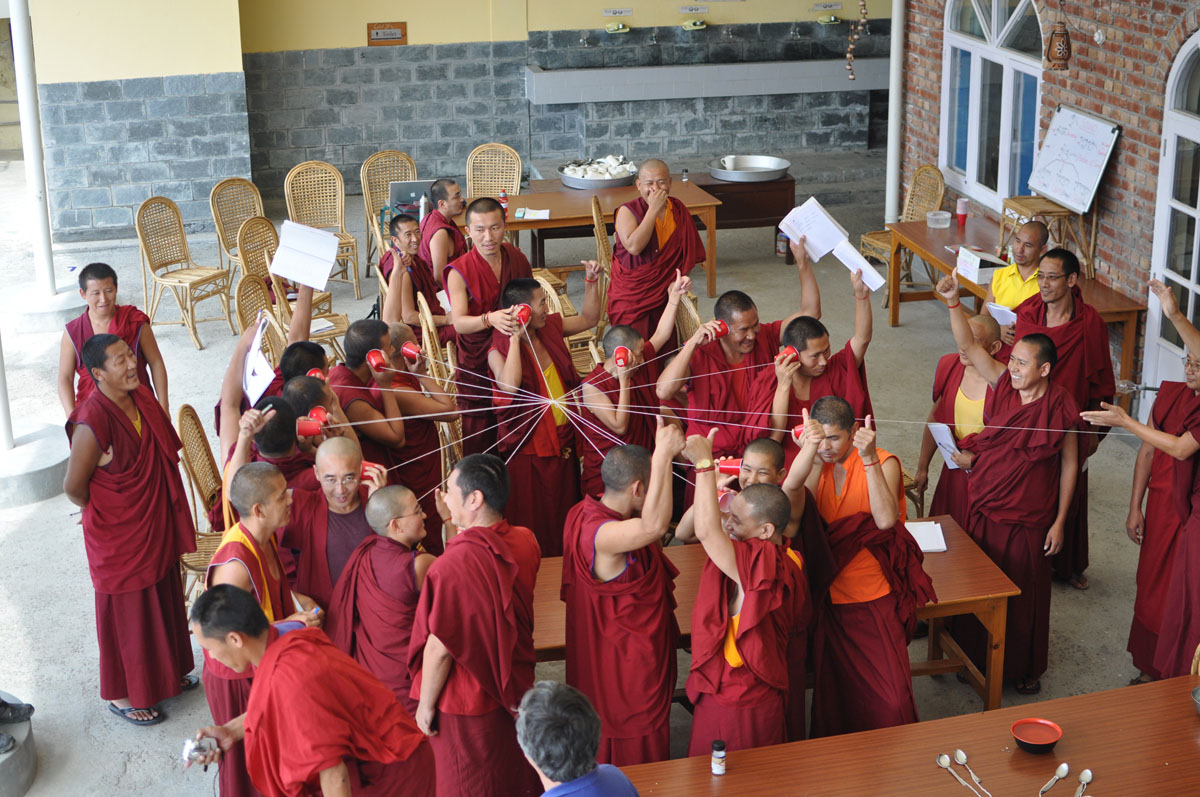
The ultimate multistring telephone.
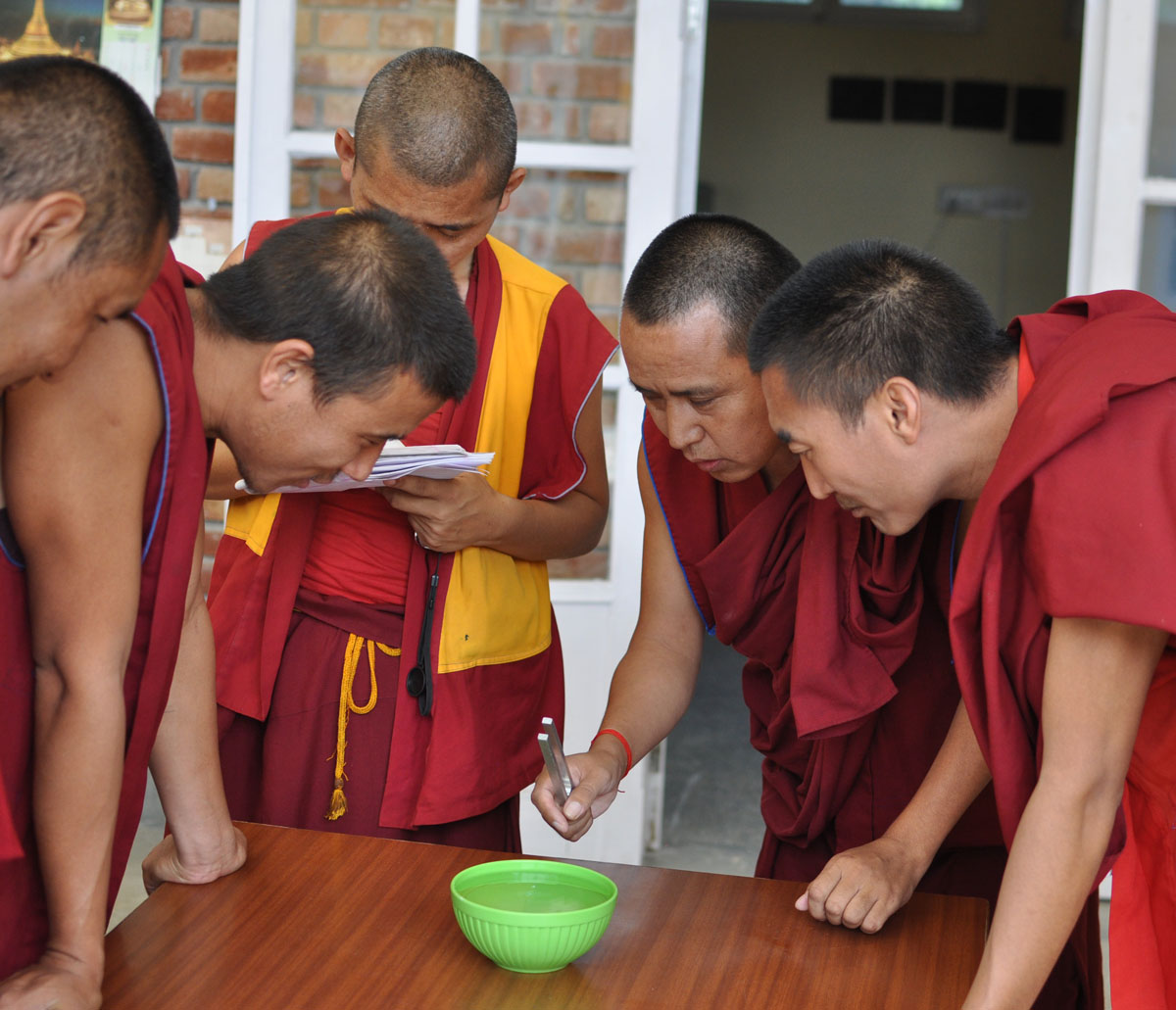
Tuning fork in water. The water splashes in the face of all the
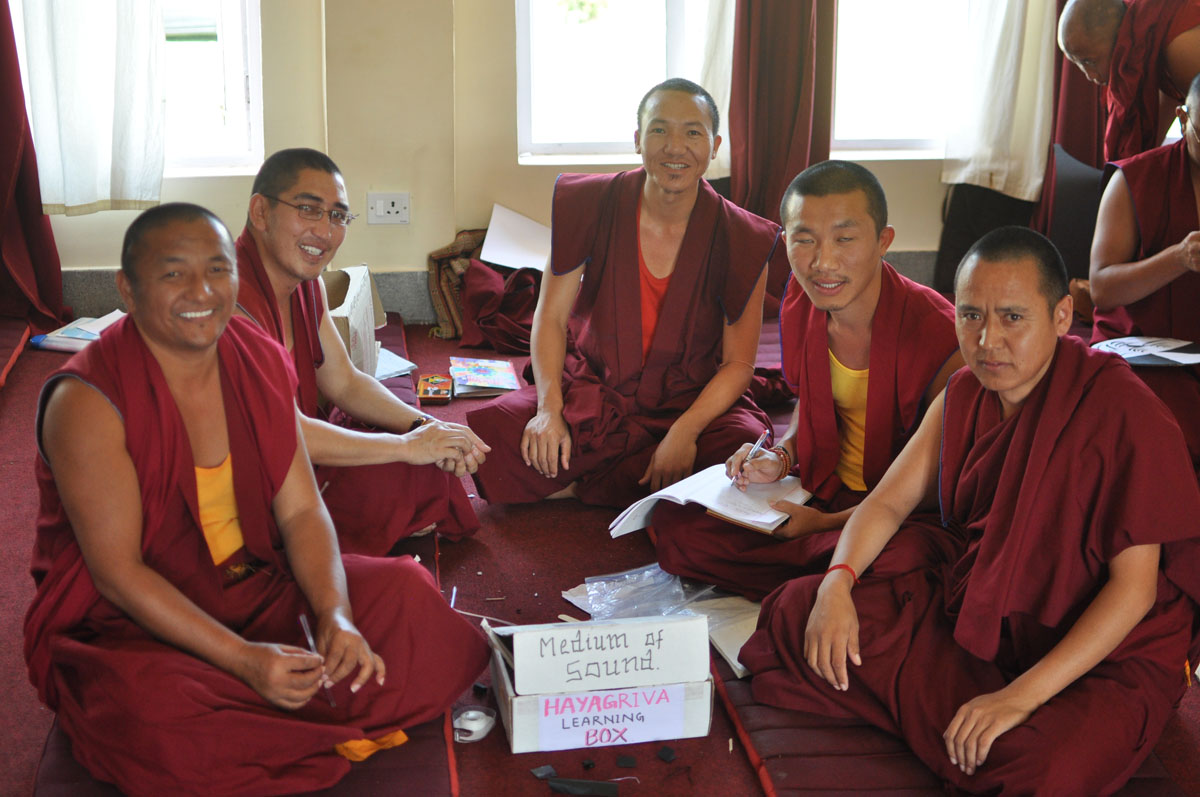
The sound group made a Learning Box for their tools
Finding Rays and inverted Images
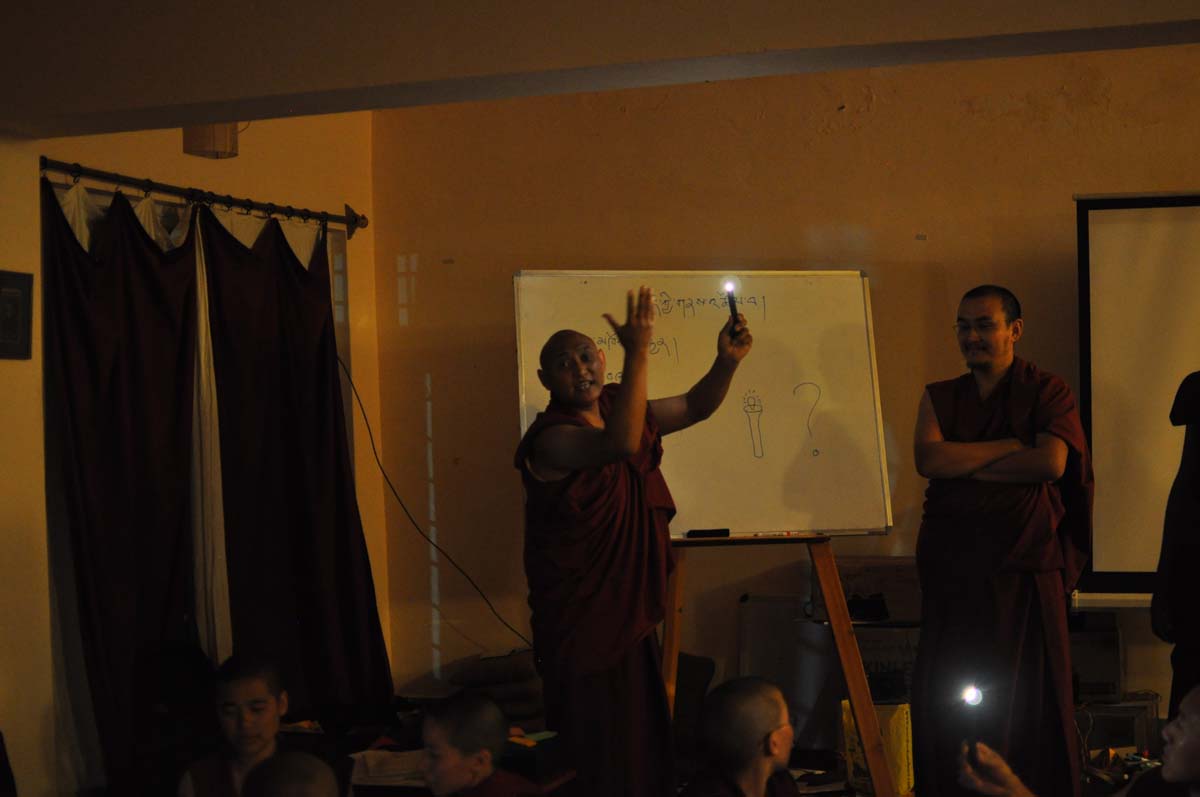
Finding Rays with a bright point of light in a dim room.
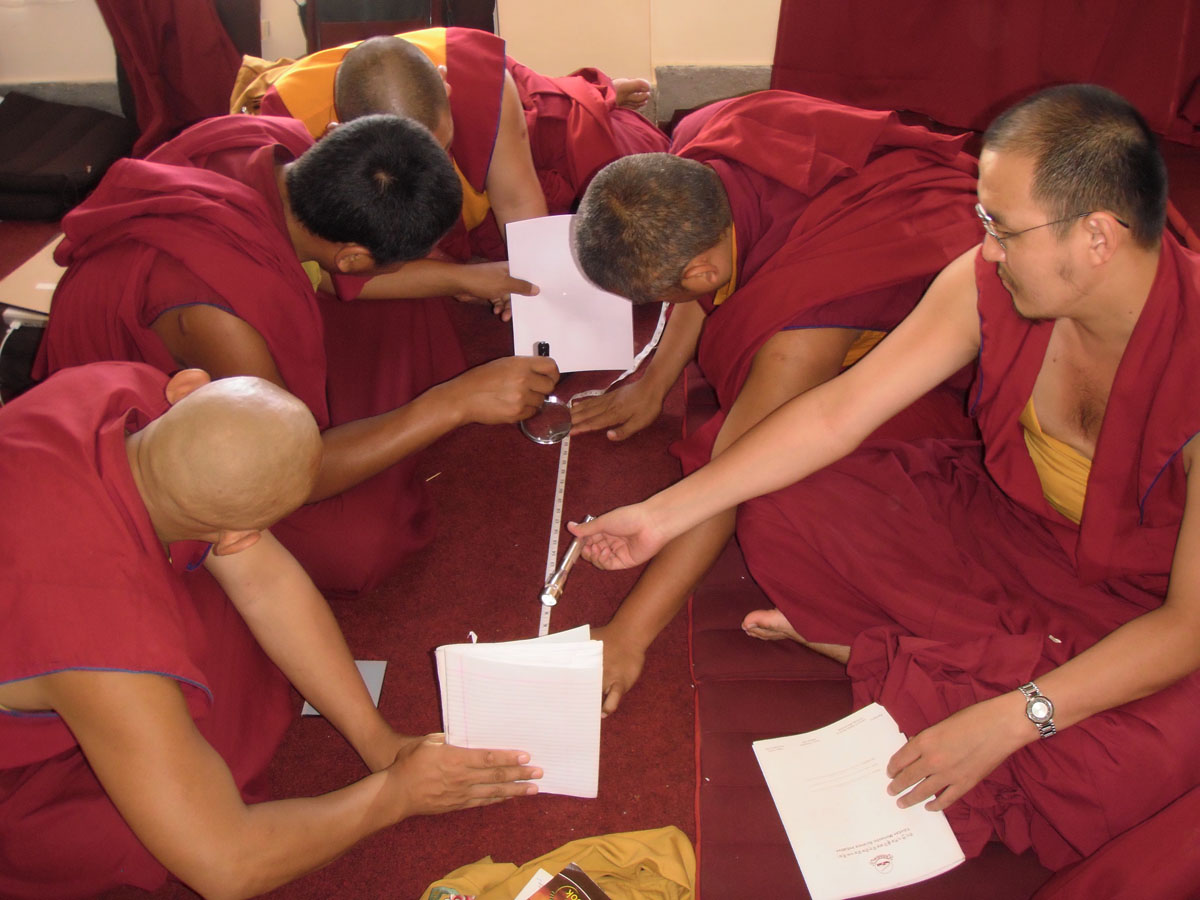
The monks chose a challenging exhibit, they wanted to make an inverted image of an inverted image to model what the eye/brain does. This is essentially the Exploratorium's Image Relay exhibit they succeeded.
Light Box
It was impressive to watch the monks whip out their cell phones to take images to document the colors they were producing with light boxes.
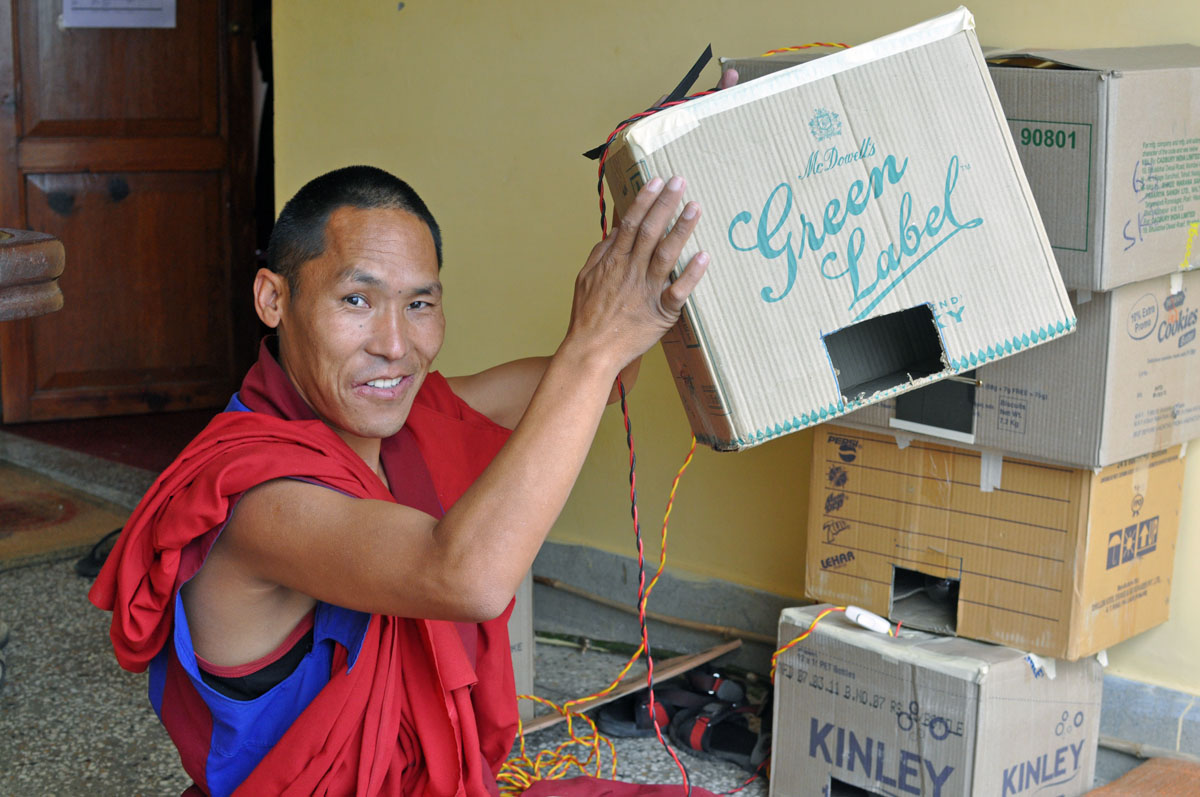
Build 8 lightboxes.
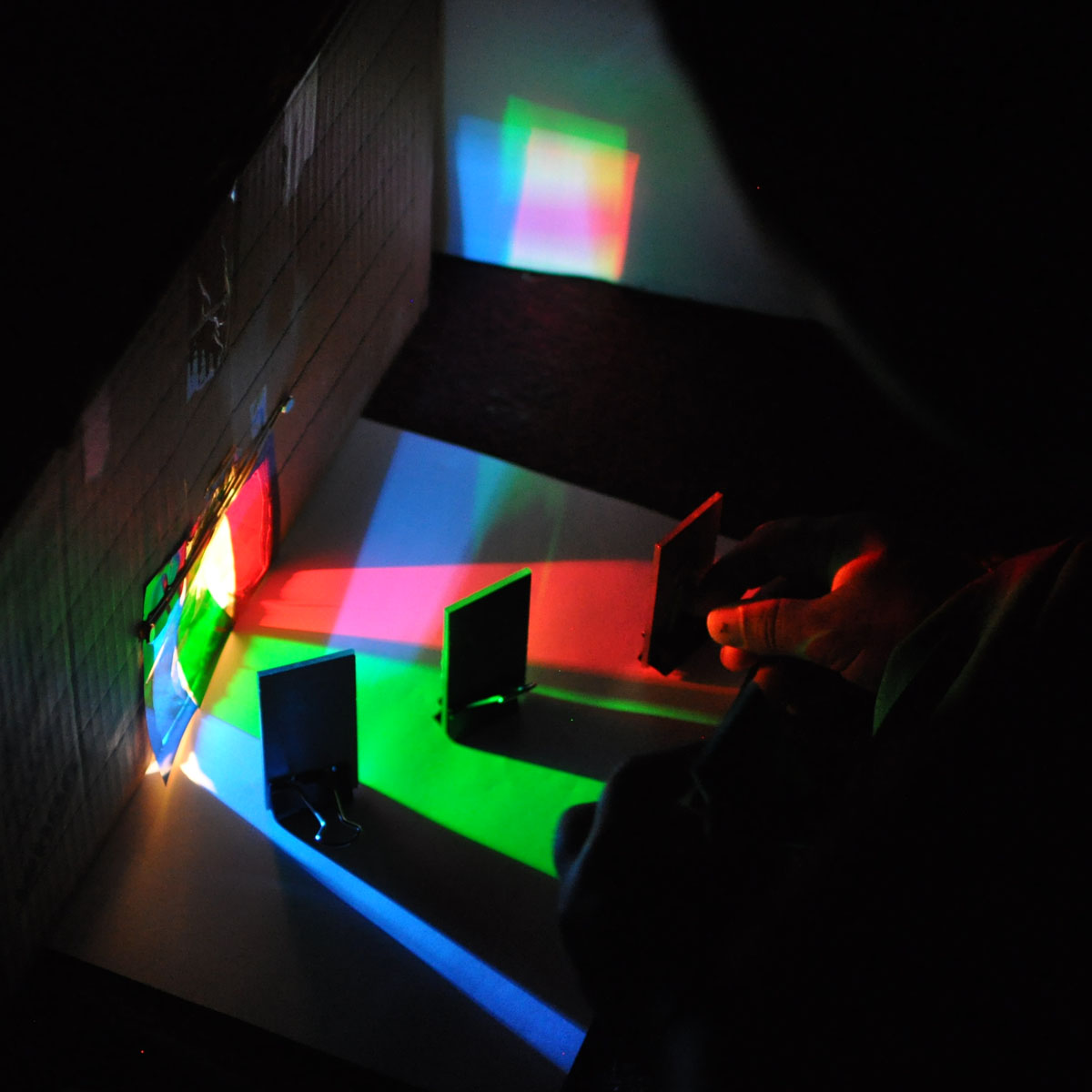
Use mirrors to study colored light addition
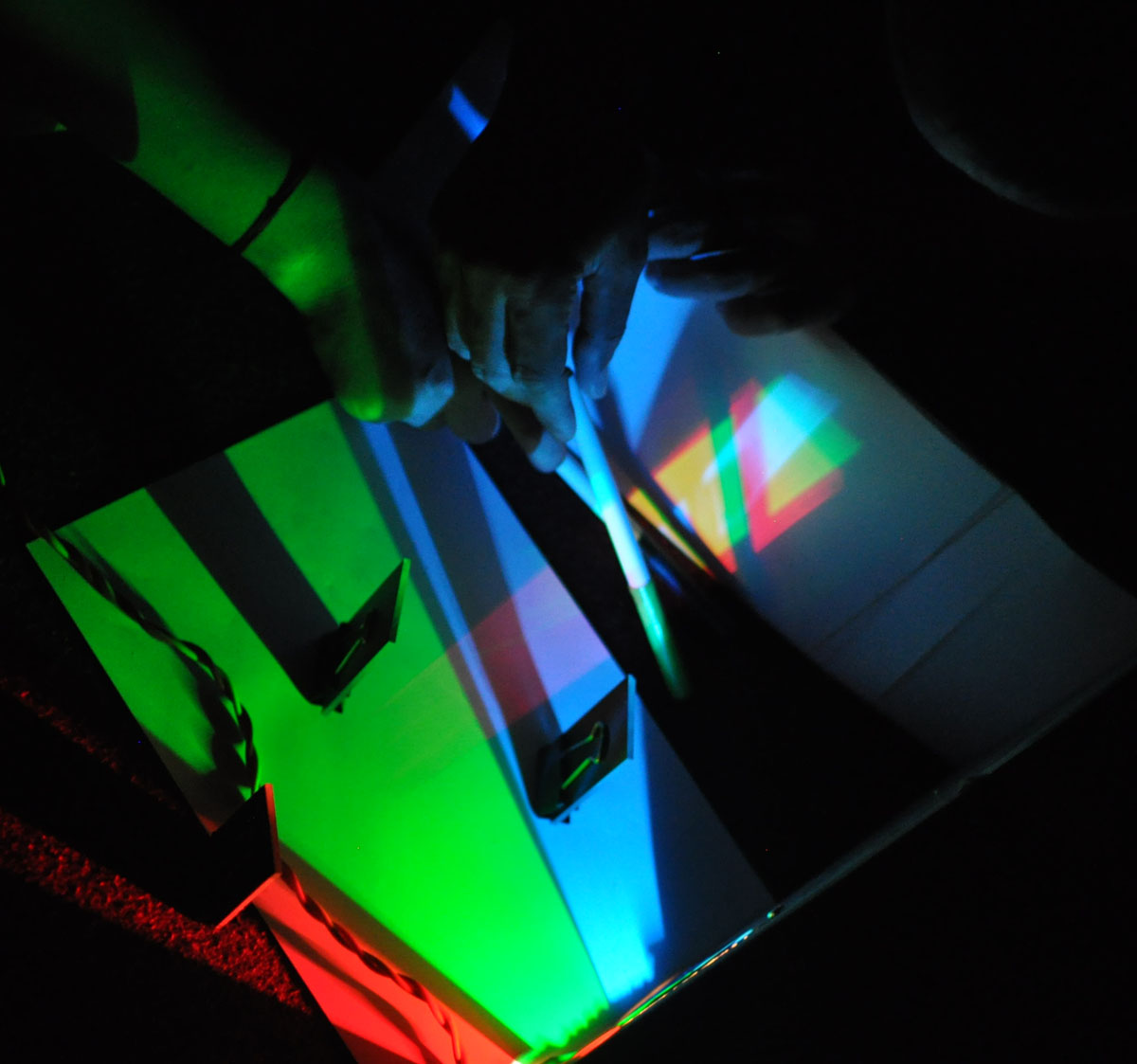
Us ea pencil to show light removal
Blind Spot
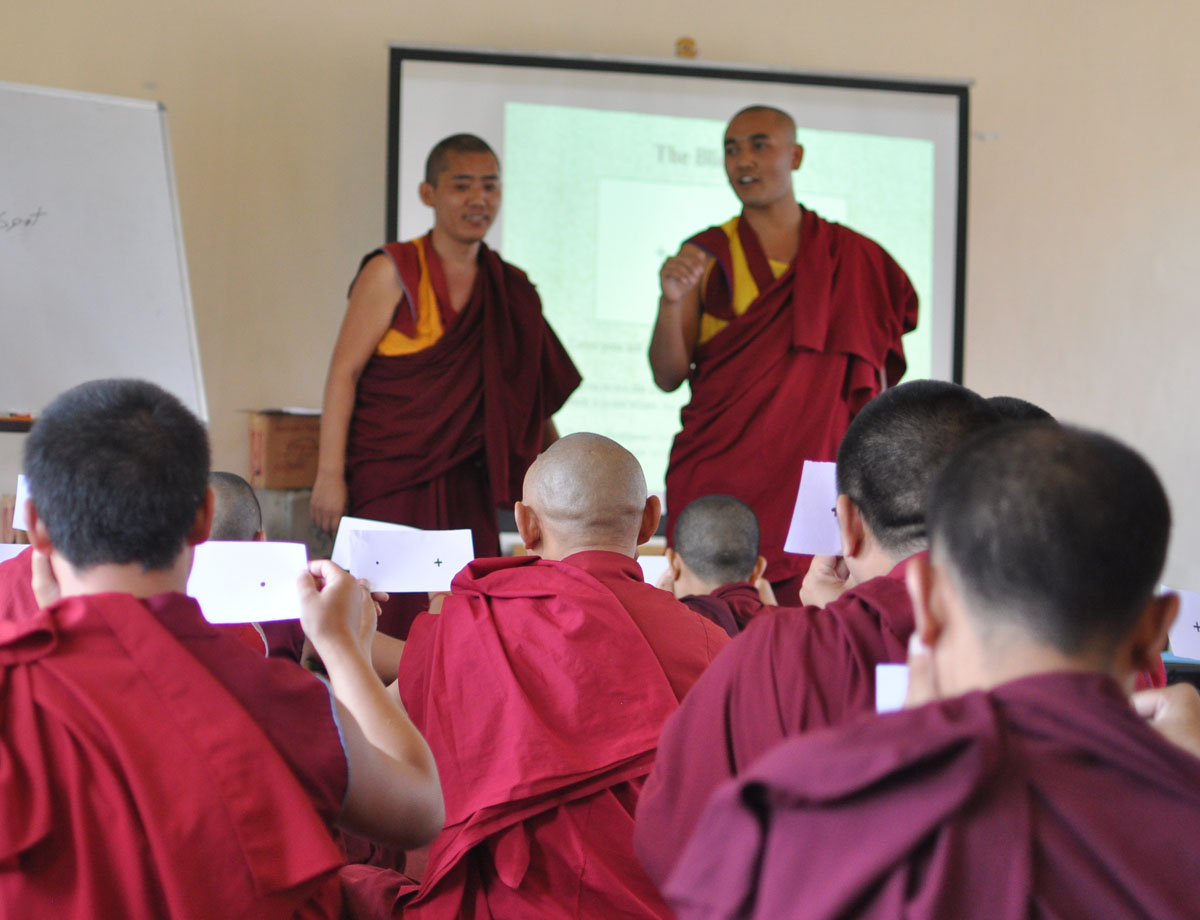
The monks used a wonderful blind spot demonstrator design from Eric Chudler.
Stroop Effect
Time how long it takes to speak the names of an array of colored squares, then try color name words and finally name the colors of the inks used to write colored words.
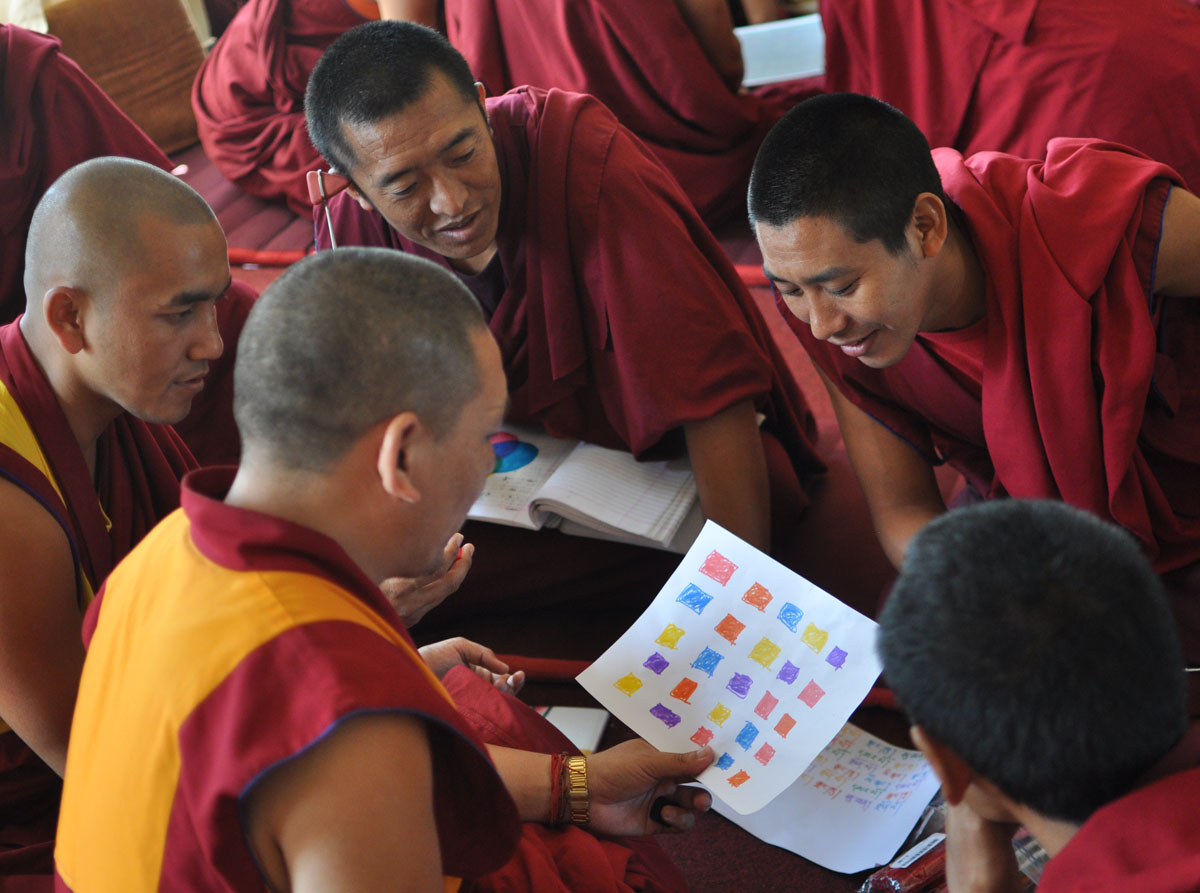
First name the color squares.
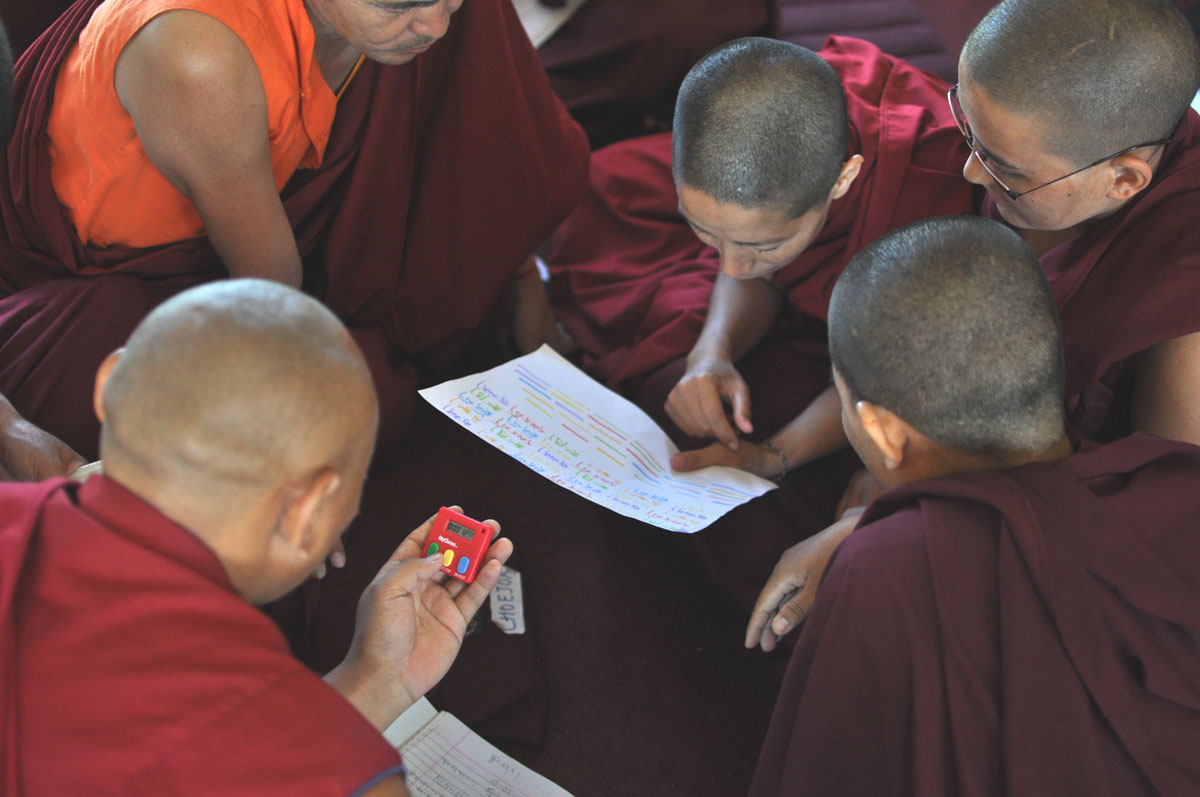
Time how long it takes to read the words.
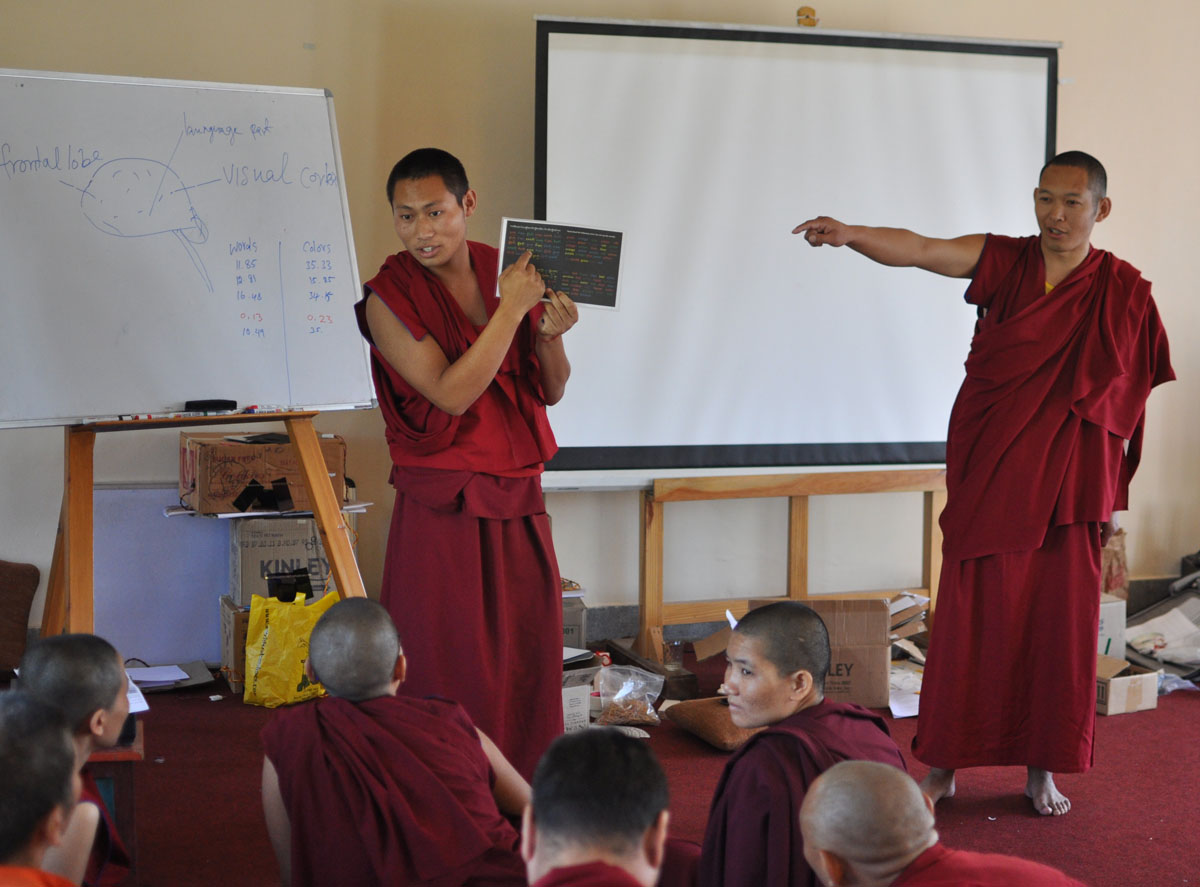
And finally time how long it takes to read the color of the ink when the word names a different color. This takes significantly longer.
After Images
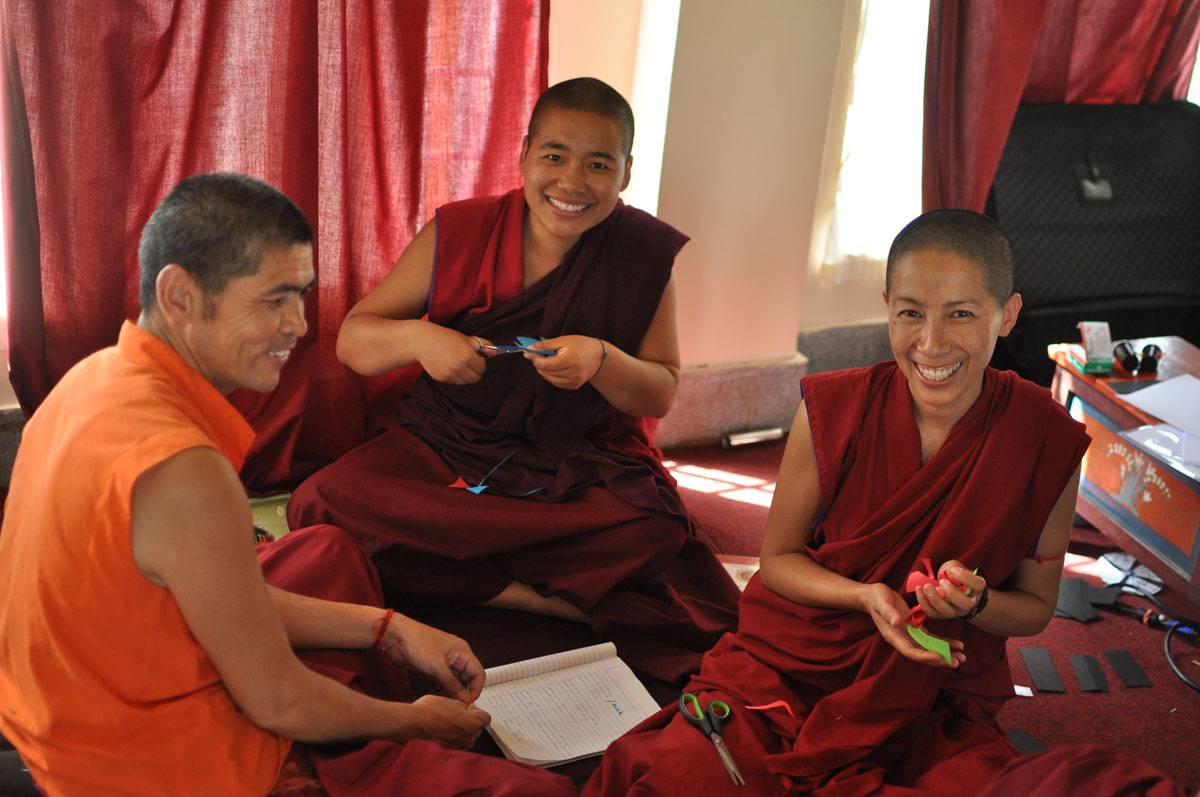
Cut out bird shapes in different colors of paper.
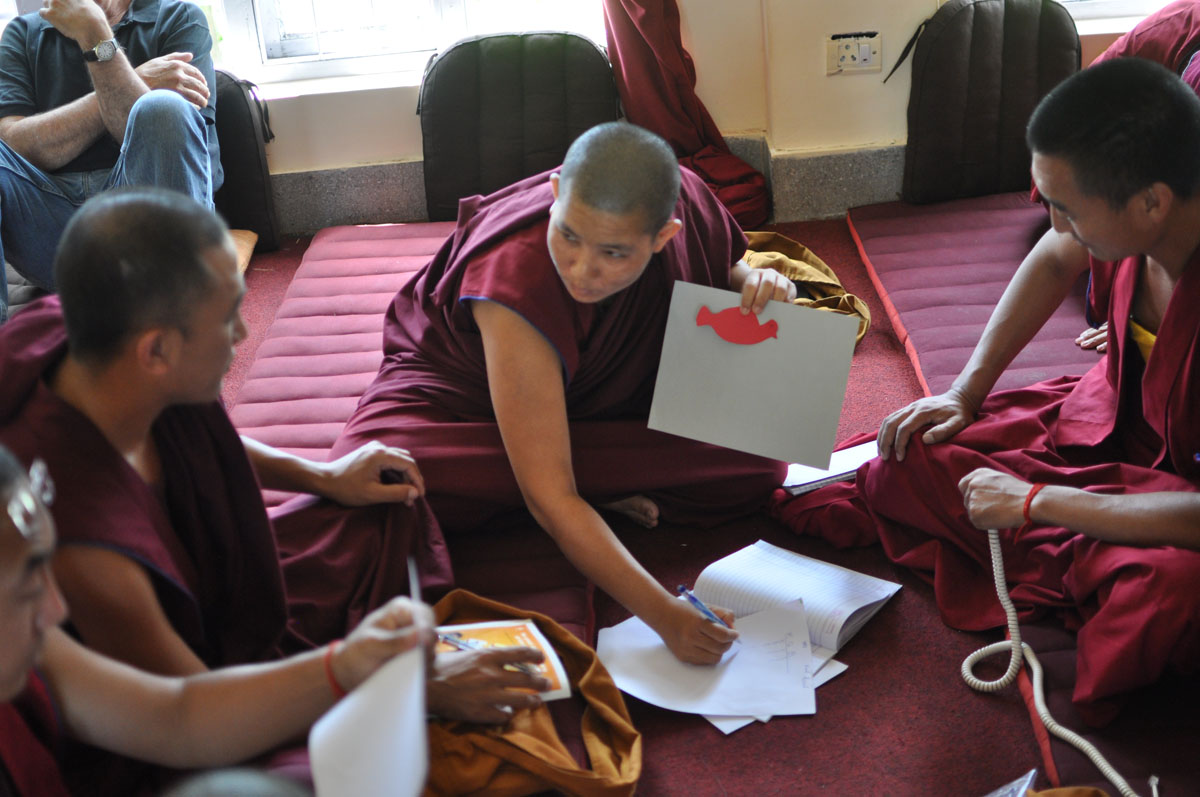
Hold the bird shape against a white background and stare at it for 30 seconds.
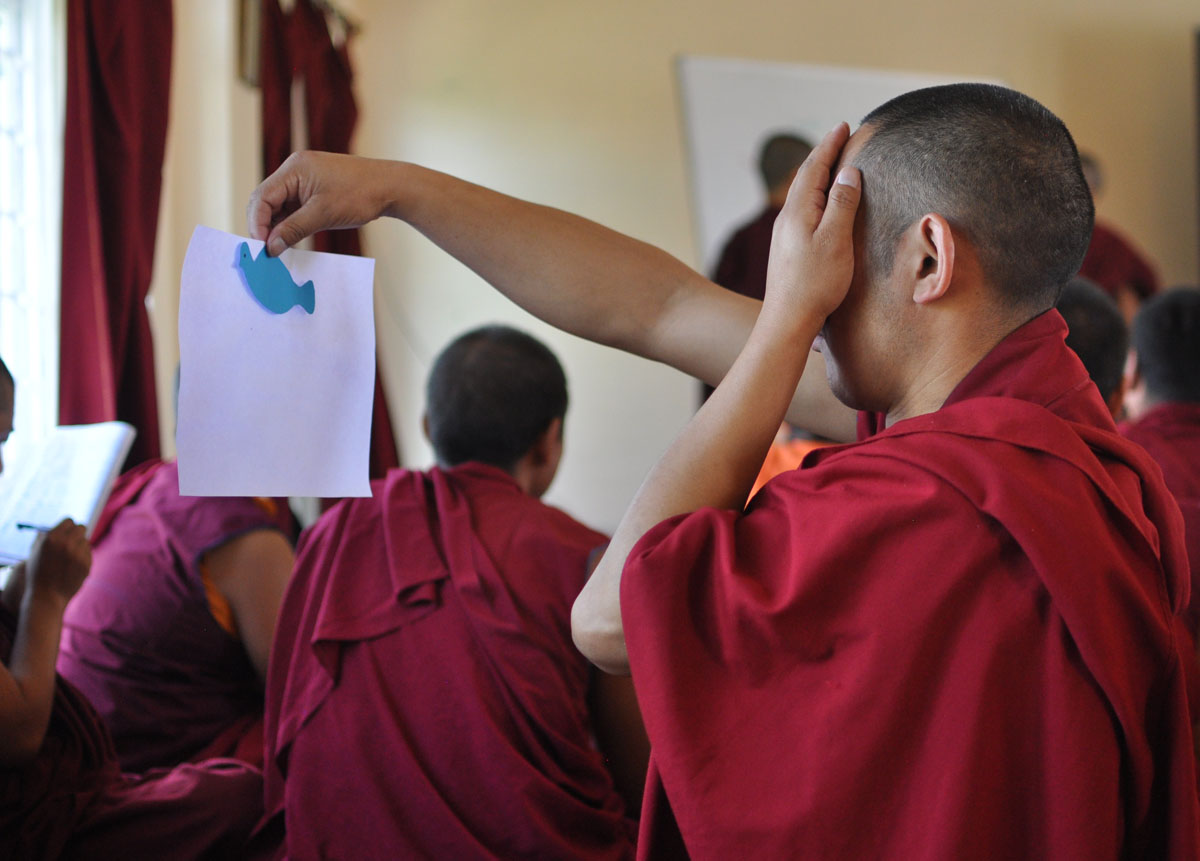
Then drop the shape and see the after image color.
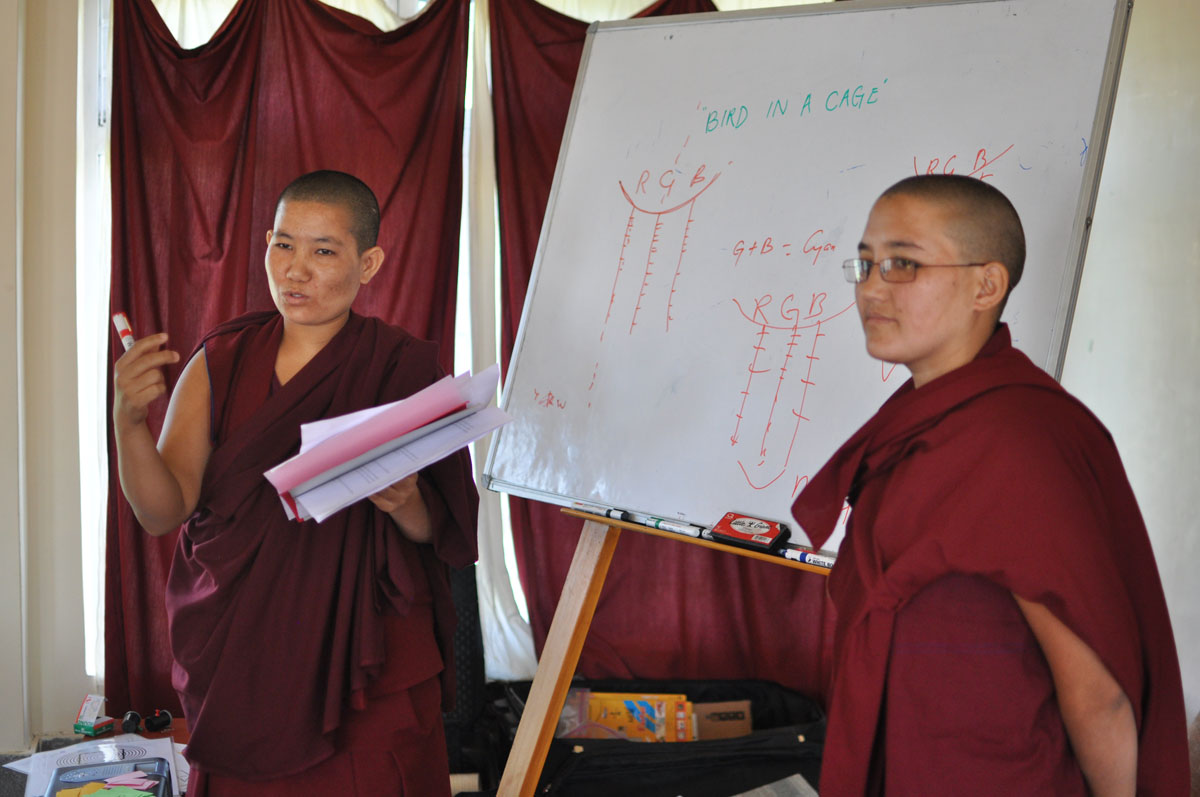
Discuss the way that after images are created.
All of the presentations by the monks and nuns were awesome. They showed that they adopted hands-on education using facilitated exploration. They also showed they had learned a lot of science.
We instructors learned to have great respect for the excellent teachers we were working with.